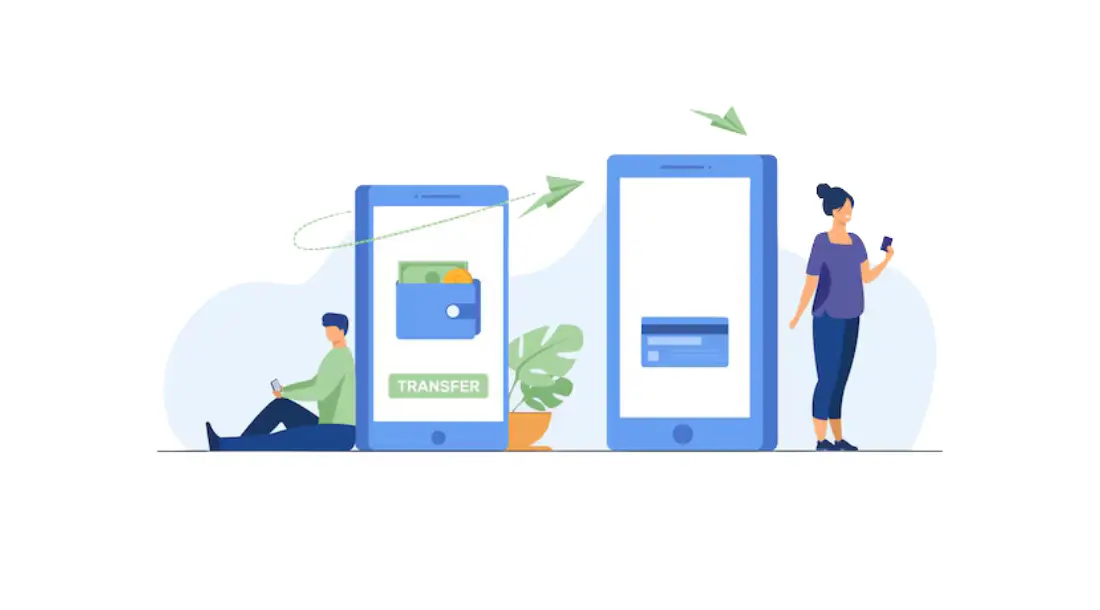Today’s market is characterized by unprecedented competition, technological advancements, and the growing demand for personalized services. Omnichannel banking trends are at the forefront of this transformation, driven by innovations such as artificial intelligence, big data analytics, and open banking frameworks. Financial institutions are no longer merely service providers; they are evolving into customer-centric hubs offering tailored experiences that cater to individual needs. The rise of mobile banking, chatbots, and integrated systems has enabled banks to connect with customers across multiple touchpoints, ensuring a consistent and engaging journey.
As we delve deeper into the evolving landscape of omnichannel banking trends, this blog will explore how these developments are shaping the future of finance. From emerging technologies to shifting customer expectations, we will uncover the opportunities and challenges that lie ahead for banks aiming to thrive in this new era of omnichannel innovation.
Table of Contents
- Overview of Omnichannel Banking Trends
- Current State of Omnichannel Banking Trends
- Evolution of Omnichannel Banking Trends
- Key Statistics and Market Trends
- Challenges Banks Currently Face
- Key Omnichannel Banking Trends
- AI and Personalization
- Enhanced Mobile Banking Apps
- Open Banking and API Integration
- Data-Driven Banking
- Seamless Cross-Channel Experiences
- Voice and Conversational Banking
- Focus on Cybersecurity
- ESG (Environmental, Social, and Governance) Banking
- Banking for the Underserved
- Real-Time Payments and Services
- Benefits of Adopting Omnichannel Banking Trends
- Strategies for Banks to Stay Ahead
- Emerging Technologies Shaping the Future of Omnichannel Banking Trends
- Predictions for the Next Decade in Omnichannel Banking
Overview of Omnichannel Banking Trends
The financial sector is undergoing a transformative period, with omnichannel banking trends playing a pivotal role in redefining how banks interact with their customers. By seamlessly integrating various customer touchpoints—both physical and digital—these trends enable financial institutions to provide a unified and consistent experience. This section explores the definition of omnichannel banking and its growing importance in the modern financial landscape.
Definition of Omnichannel Banking
Omnichannel banking refers to a holistic approach where banks integrate multiple communication and service channels to create a seamless customer experience. Unlike multichannel banking, where each channel operates independently, omnichannel banking ensures interconnectedness and continuity. Customers can begin a transaction on one platform, such as a mobile app, and complete it in a branch or through an online portal without losing context or data.
In today’s digital age, omnichannel banking trends emphasize the convergence of traditional banking methods with advanced digital technologies. Banks are no longer restricted to physical branches; they now incorporate mobile apps, websites, chatbots, social media platforms, and even voice banking systems into their service repertoire. For instance, a customer might receive personalized financial recommendations via email, which are consistent with the offers displayed on their banking app and in-branch promotions.
Identifying Current Omnichannel Banking Trends
Current omnichannel banking trends are characterized by innovation and a customer-first approach. Among these are:
- AI and Personalization: The use of artificial intelligence to analyze customer data and deliver personalized financial solutions. This trend enhances customer engagement by offering tailored products and services based on individual preferences.
- Mobile Banking Dominance: Mobile apps are evolving with features like biometric authentication, real-time payments, and intuitive interfaces, becoming the cornerstone of omnichannel strategies.
- Cross-Channel Integration: Ensuring that customer interactions across digital and physical channels are synchronized, offering continuity regardless of the channel chosen.
- Data-Driven Insights: Leveraging big data analytics to predict customer needs and optimize offerings across channels.

These trends are reshaping the financial services landscape, ensuring that banks not only meet but exceed the expectations of their increasingly tech-savvy customers.
Core Features of Omnichannel Banking Trends
Omnichannel banking trends are defined by several foundational features that distinguish them from traditional banking approaches:
- Interconnectivity Across Platforms: Omnichannel banking ensures that all customer interactions—whether via mobile apps, branches, or websites—are linked, providing a unified and uninterrupted experience.
- Consistency in Service Delivery: Customers receive the same level of service and information regardless of the channel used, fostering trust and satisfaction.
- Real-Time Data Utilization: By leveraging real-time customer data, banks can provide personalized services, faster transaction processing, and immediate problem resolution.
These features collectively form the backbone of omnichannel banking, enabling financial institutions to offer a customer-centric approach that adapts to evolving expectations.
Importance of Omnichannel Banking in Modern Finance
Omnichannel banking trends are not just technological advancements; they are strategic imperatives for banks aiming to remain competitive in today’s financial market. Their importance stems from three critical factors: evolving consumer expectations, the need for seamless customer experiences, and the competitive advantage they offer.
Changing Consumer Expectations
Modern customers demand convenience, speed, and personalization in every interaction. They expect banks to deliver the same level of service across channels, whether they are engaging with a chatbot, visiting a branch, or using a mobile app. Omnichannel banking trends address these expectations by ensuring that:
- Service is consistent and accessible across all channels: Customers can switch between channels without disruption, whether they start a loan application online and complete it in a branch or check account balances through a voice assistant.
- Interactions are personalized and relevant: Banks use customer data to provide customized experiences, such as offering tailored financial advice or pre-approved loans.
Need for Seamless Customer Experiences
A seamless customer experience is the hallmark of omnichannel banking trends. Unlike traditional banking, where customers often encounter friction when switching between channels, omnichannel banking eliminates these barriers. Key aspects of this seamless experience include:
- Unified Communication: All customer interactions are connected, allowing them to continue a conversation or transaction across different platforms without repeating information.
- Integrated Service Delivery: Banks can offer services like real-time updates on transactions, instant support via chatbots, and quick access to account details, ensuring an effortless experience.
- Customer-Centric Design: Omnichannel banking trends prioritize ease of use and accessibility, making banking convenient for all demographics.
Competitive Advantage for Banks
In a fiercely competitive market, omnichannel banking trends give banks an edge by enhancing customer satisfaction and loyalty. Banks that successfully adopt these trends can:
- Attract and retain tech-savvy customers: Millennials and Gen Z customers are drawn to banks that offer cutting-edge digital services alongside traditional options.
- Increase operational efficiency: Omnichannel banking reduces redundancies and improves collaboration across departments, resulting in faster response times and better service quality.
- Expand market reach: By incorporating digital platforms, banks can serve customers in remote or underserved areas, broadening their customer base.

By embracing omnichannel banking trends, financial institutions position themselves as innovative, customer-focused, and future-ready. This alignment with modern consumer expectations and market demands ensures their continued relevance and success in the evolving financial ecosystem.
Current State of Omnichannel Banking Trends
Omnichannel banking trends have become a transformative force in the financial services industry, revolutionizing the ways banks engage with customers and deliver services. With the rise of advanced technologies, evolving consumer demands, and a competitive market landscape, these trends are not merely optional enhancements but critical components for banks aiming to thrive in the modern era. The current state of omnichannel banking showcases a dynamic intersection of innovation, customer-centric strategies, and operational evolution. However, alongside these opportunities come challenges that financial institutions must address to fully unlock the potential of omnichannel banking.
Evolution of Omnichannel Banking Trends
Omnichannel banking trends have transformed how financial institutions engage with customers, evolving from basic online services to integrated, seamless experiences across digital and physical channels. This evolution reflects the industry’s response to technological advancements, changing consumer preferences, and the need for operational efficiency. From the early days of online banking to the sophisticated integration of mobile, in-branch, and online platforms, these trends continue to shape the future of banking.
Early Days of Online Banking
The foundation of omnichannel banking trends lies in the early days of online banking. In the 1990s, banks began exploring digital platforms to provide basic services like account inquiries and fund transfers. These initial efforts marked a significant departure from traditional banking models reliant on physical branches.

- Digital Beginnings: Early online banking systems were simplistic, offering static information and limited functionalities. However, they laid the groundwork for what would become a pivotal shift in banking operations.
- Emergence of Internet Banking: As Internet connectivity improved, banks expanded their services to include bill payments, loan applications, and secure messaging with customer service representatives. This era saw a surge in customer adoption, driven by convenience and time savings.
- Challenges in Adoption: Despite the promise of online banking, early adopters faced hurdles, such as slow internet speeds and concerns over data security. Banks had to invest heavily in infrastructure and customer education to overcome these barriers.
Integration of Mobile, In-Branch, and Online Channels
As technology advanced, omnichannel banking trends evolved to integrate multiple touchpoints, allowing customers to transition seamlessly between channels. This integration transformed the banking experience from siloed interactions to a cohesive journey.
- Mobile Banking Revolution: The proliferation of smartphones in the 2010s brought a new dimension to omnichannel banking. Mobile apps emerged as a primary channel, offering features like remote deposits, real-time notifications, and location-based services.
- Physical and Digital Convergence: Banks recognized the importance of blending physical branch experiences with digital offerings. For example, customers could initiate loan applications online and complete them in-branch, ensuring a personalized touch.
- Emerging Technologies: Innovations such as chatbots, AI-driven personalization, and biometric authentication further enhanced the omnichannel experience. These technologies bridged the gap between online convenience and in-person engagement.

Today, omnichannel banking trends reflect a mature model where customers can access consistent services, regardless of the channel. This evolution has not only improved customer satisfaction but also positioned banks as leaders in digital transformation.
Key Statistics and Market Trends
Omnichannel banking trends are reshaping the financial landscape, driven by the rapid adoption of technology, evolving customer preferences, and significant investments by financial institutions. This section delves into the current statistics, consumer behaviors, and strategic investments that define the state of omnichannel banking today.
Adoption Rates of Omnichannel Banking
Omnichannel banking trends have witnessed remarkable growth, underscoring the industry’s shift toward customer-centric and technology-driven models.
- Global Penetration: Surveys indicate that over 75% of global banking customers now use more than one channel to interact with their banks. Among these, mobile banking leads the way, accounting for nearly half of all interactions, highlighting its central role in the omnichannel ecosystem.
- Regional Variations: Developed markets like North America and Europe show high adoption rates of omnichannel banking trends, with customers regularly utilizing integrated services. Meanwhile, emerging markets in Asia and Africa are experiencing rapid growth, driven by increasing smartphone penetration and a growing preference for mobile-first banking solutions.
- Post-Pandemic Surge: The COVID-19 pandemic acted as a major catalyst, accelerating the adoption of omnichannel banking trends. Customers who previously relied on in-branch visits were compelled to transition to digital platforms, resulting in lasting changes in behavior. This shift has reinforced the importance of robust and accessible digital banking channels.
Consumer Behavior and Expectations
Understanding consumer behavior is at the heart of successful omnichannel banking trends. Customers today demand more than just functionality—they seek convenience, personalization, and security.

- Demand for Personalization: Personalization is no longer optional but a core expectation. Modern customers value AI-driven services that offer tailored financial solutions based on their preferences, such as targeted loan offers or customized savings plans. This level of personalization has become a key driver of customer satisfaction and loyalty.
- Preference for Convenience: Customers prioritize seamless access to services across multiple touchpoints. Omnichannel banking trends cater to this demand by integrating online, mobile, and in-branch interactions, ensuring consistent service delivery regardless of the channel. Features like instant fund transfers, real-time updates, and 24/7 availability resonate strongly with tech-savvy users.
- Focus on Security: While ease of use is critical, customers remain highly sensitive to data privacy and security. Banks must ensure robust security measures, such as two-factor authentication, end-to-end encryption, and secure digital identities, to maintain customer trust and confidence.
Investments in Digital Transformation by Financial Institutions
To align with omnichannel banking trends and meet growing customer expectations, banks are heavily investing in transformative technologies and partnerships.
- AI and Machine Learning: Financial institutions are leveraging AI to enhance customer interactions, predict behaviors, and automate routine processes. This includes the use of chatbots for instant support and machine learning algorithms for fraud detection and credit risk analysis.
- Cloud Computing: The shift to cloud-based operations has become a cornerstone of digital transformation. Cloud technology enables banks to scale services rapidly, reduce operational costs, and ensure real-time data access across all channels, enhancing the omnichannel experience.
- Partnerships with Fintechs: Banks are collaborating with fintech companies to accelerate innovation and expand their offerings. These partnerships often result in cutting-edge solutions like digital wallets, peer-to-peer lending platforms, and personalized investment tools that seamlessly integrate into the omnichannel framework.

As omnichannel banking trends continue to evolve, these statistics and market insights highlight the progress and potential within the financial sector. Understanding and responding to these trends is crucial for banks aiming to stay competitive and customer-focused in a rapidly changing landscape.
Challenges Banks Currently Face
Despite the remarkable progress in omnichannel banking trends, financial institutions face significant hurdles in implementing and maintaining these systems. The transition from traditional to omnichannel models involves overcoming technological, organizational, and operational barriers. Below is an in-depth look at the critical challenges banks must address to maximize the potential of omnichannel banking.
Siloed Operations
Siloed operations remain a fundamental obstacle to the seamless implementation of omnichannel banking trends. Many banks still rely on legacy structures that prevent different systems and departments from working cohesively.
- Lack of Integration Across Channels: One of the biggest challenges is the inability to unify data and services across all channels. For instance, customer data collected during an in-branch visit often does not sync with mobile or online platforms, resulting in disjointed experiences. This fragmentation disrupts the customer journey, making it difficult to deliver consistent service.
- Outdated Legacy Systems: Many banks operate on decades-old infrastructure, which lacks the scalability and flexibility required for modern omnichannel solutions. Upgrading or replacing these systems is costly and time-consuming, often requiring significant organizational restructuring.
- Departmental Disconnect: Inefficient communication between teams, such as marketing, IT, and customer service, further exacerbates siloed operations. Without clear collaboration, efforts to create a unified omnichannel experience are hindered.
Overcoming these silos involves implementing robust enterprise resource planning (ERP) systems and fostering interdepartmental collaboration to ensure all channels operate in harmony.
Data Security and Privacy Concerns
As omnichannel banking trends increasingly rely on digital interactions, ensuring data security and privacy has become a critical concern. With the growing sophistication of cyberattacks, banks are under immense pressure to protect sensitive customer information.

- Rising Cyber Threats: Banks are prime targets for cybercriminals due to the vast amounts of financial and personal data they handle. Threats such as phishing, ransomware, and account takeover attacks continue to evolve, requiring banks to invest in advanced cybersecurity measures.
- Regulatory Compliance and Data Privacy: Financial institutions operate under stringent data protection regulations, such as the GDPR in Europe or CCPA in California. Balancing compliance with seamless customer experiences can be challenging, as rigid measures may inadvertently impact usability.
- Maintaining Customer Trust: Security breaches not only lead to financial losses but also damage a bank’s reputation. Transparent communication about data protection efforts and swift responses to security incidents is crucial to maintaining customer confidence.
To address these challenges, banks must adopt proactive measures such as advanced encryption, real-time threat detection, and regular security audits to safeguard customer data while complying with regulatory standards.
Managing Consistent User Experiences Across Multiple Channels
Providing a seamless and consistent user experience across all channels is a cornerstone of omnichannel banking trends but is also one of the most difficult objectives to achieve.

- Catering to Diverse User Preferences: Customers interact with banks through various channels, including mobile apps, websites, in-branch visits, and voice assistants. Each touchpoint presents unique requirements and expectations, making it challenging to maintain consistency in service quality and functionality.
- Technological Limitations: Gaps in technology can lead to inconsistent experiences. For example, a mobile app might offer advanced features like biometric authentication or real-time transaction alerts, whereas the website may lag behind in functionality. Such disparities create friction for users switching between platforms.
- Synchronizing Real-Time Data: Achieving a unified customer journey requires real-time synchronization of data across all channels. This involves integrating multiple systems and ensuring that updates in one channel are immediately reflected across others. Without robust IT infrastructure, delays and discrepancies can disrupt the customer experience.
Banks can address these issues by investing in unified communication platforms, customer relationship management (CRM) systems, and advanced analytics to deliver consistent experiences across all touchpoints.
Resource Constraints and Cost Pressures
- High Implementation Costs: Transitioning to an omnichannel framework requires substantial investment in technology, infrastructure, and personnel training, which may strain financial resources, especially for smaller institutions.
- Ongoing Maintenance and Upgrades: Beyond the initial implementation, maintaining and continuously improving omnichannel systems involves recurring costs. Upgrades, system patches, and regular IT support are necessary to keep systems functional and secure.
- Talent Shortages: As banks move toward adopting more sophisticated technologies, there is a growing need for skilled professionals, such as data scientists, AI specialists, and cybersecurity experts. The scarcity of such talent can delay progress and inflate operational costs.
Customer Education and Adoption
Even with cutting-edge omnichannel solutions, banks face challenges in educating customers about new services and encouraging adoption.
- Resistance to Change: Some customers, particularly older demographics, may resist adopting new technologies and prefer traditional in-branch services. Ensuring inclusivity while promoting digital tools requires careful communication and support.
- Complexity of Features: Advanced features such as mobile wallets, voice banking, or AI-driven financial planning can overwhelm less tech-savvy users. Simplifying interfaces and providing user-friendly tutorials are essential to increase adoption rates.
- Building Awareness: Many customers remain unaware of the full range of services available through omnichannel platforms. Banks must invest in targeted marketing and customer education to highlight the benefits and ease of use.

The current state of omnichannel banking trends highlights both the tremendous progress made and the hurdles that remain. By addressing these challenges, financial institutions can further refine their strategies and harness the full potential of omnichannel banking to enhance customer experiences and drive business growth.
Key Omnichannel Banking Trends
Omnichannel banking trends are reshaping the financial services industry, reflecting a strategic shift toward creating unified and customer-centric experiences. These trends are driven by the integration of advanced technologies, the growing demand for personalization, and the need to bridge digital and physical interactions seamlessly. As banks strive to stay competitive, they are adopting innovative solutions to enhance customer satisfaction, streamline operations, and improve service delivery.
AI and Personalization
Artificial intelligence has become a cornerstone of omnichannel banking trends, empowering financial institutions to deliver highly personalized services tailored to the unique preferences and behaviors of their customers. The integration of AI into banking systems allows institutions to not only streamline operations but also enhance customer satisfaction by offering experiences that feel intuitive and relevant. Here, we explore the transformative role of AI and its ability to personalize banking services effectively.
Role of AI in Delivering Personalized Banking Experiences
AI plays a pivotal role in redefining how banks engage with their customers, ensuring that interactions are personalized, efficient, and meaningful. Omnichannel banking trends leverage AI to create customized financial journeys that resonate with individual needs, regardless of the channel customers use.

- Customized Financial Recommendations: One of the most impactful applications of AI in omnichannel banking trends is its ability to provide tailored financial recommendations. For example, AI systems can analyze a customer’s spending habits, income patterns, and savings goals to suggest personalized credit card offers, loan products, or investment portfolios. This level of customization builds trust and strengthens customer relationships.
- Real-Time Assistance Across Channels: AI-driven chatbots and virtual assistants are becoming key components of omnichannel banking trends, offering real-time assistance to customers across mobile apps, websites, and in-branch kiosks. These tools can handle a wide range of tasks, from answering queries about account balances to guiding users through complex processes like mortgage applications.
- Dynamic Customer Engagement: AI systems can dynamically adapt interactions based on customer behavior. For instance, if a customer frequently uses a mobile app for transactions, the bank might prioritize app-based alerts or notifications for personalized financial tips, ensuring the customer remains engaged on their preferred platform.
By harnessing AI, banks can ensure that each interaction feels relevant and valuable, fostering customer loyalty and driving long-term growth.
Use of Machine Learning Algorithms to Analyze Customer Behavior and Predict Needs
Machine learning, a subset of AI, is instrumental in driving the predictive capabilities of omnichannel banking trends. By processing vast amounts of data in real time, machine learning algorithms enable banks to anticipate customer needs and proactively deliver solutions, transforming the banking experience from reactive to proactive.

- Behavioral Analysis for Proactive Solutions: Machine learning algorithms analyze customer data, such as transaction history, spending patterns, and demographic information, to identify trends and predict future needs. For example, if a customer frequently makes payments to a utility company, the system might suggest setting up automatic bill payments or offer a related rewards program.
- Fraud Detection and Prevention: Machine learning models are adept at identifying anomalies in customer behavior that could indicate fraudulent activity. For instance, an unusual transaction pattern might trigger an immediate alert, ensuring the customer is informed and the issue is resolved quickly, regardless of the channel used.
- Enhancing Product Recommendations: As part of omnichannel banking trends, machine learning enables banks to refine their product recommendations. By analyzing factors like a customer’s risk tolerance, financial goals, and previous product interactions, banks can suggest relevant services, such as low-risk investment opportunities or savings accounts with higher interest rates.
- Anticipating Lifecycle Needs: Machine learning algorithms also excel at recognizing patterns tied to life stages. For instance, if a customer’s behavior indicates they are planning to purchase a home, the bank can proactively offer mortgage options, home-buying tips, and pre-approval processes across multiple channels.
By integrating machine learning into their omnichannel strategies, banks can move beyond one-size-fits-all solutions, delivering experiences that are not only personalized but also predictive, ensuring customers feel understood and valued.
The Strategic Impact of AI and Personalization on Omnichannel Banking Trends
The integration of AI and machine learning into omnichannel banking trends is more than a technological advancement; it is a strategic imperative. These technologies enable banks to:
- Build Deeper Customer Relationships: Personalized experiences foster trust and loyalty, positioning the bank as a reliable partner in the customer’s financial journey.
- Enhance Operational Efficiency: Automating routine tasks with AI reduces costs and frees up human resources for more complex customer interactions.
- Drive Competitive Advantage: Banks that excel in personalization stand out in a crowded market, attracting tech-savvy customers who prioritize seamless and tailored services.

As omnichannel banking trends continue to evolve, the role of AI and personalization will only grow, shaping the future of customer engagement in the financial industry. Banks that invest in these technologies today are well-positioned to meet the demands of tomorrow’s customers, creating experiences that are not just seamless but deeply meaningful.
Enhanced Mobile Banking Apps
Mobile banking apps have emerged as a cornerstone of omnichannel banking trends, playing a critical role in reshaping how customers interact with financial institutions. These apps have evolved far beyond simple account management tools, becoming comprehensive platforms that enable secure transactions, real-time updates, and highly personalized experiences. Enhanced mobile banking apps are driving innovation by integrating advanced features such as mobile wallets, peer-to-peer (P2P) transfers, biometric authentication, and voice banking. These advancements ensure seamless, efficient, and secure banking experiences, further cementing the importance of mobile technology in omnichannel strategies.
Integration of Advanced Features: Mobile Wallets, P2P Transfers, and Biometric Authentication
Enhanced mobile banking apps are defined by their ability to integrate cutting-edge technologies that address modern consumer needs. As part of omnichannel banking trends, these features ensure that customers can access a full suite of financial services at their fingertips.

- Mobile Wallets for Convenience: Mobile wallets have become a vital component of enhanced banking apps, enabling users to store debit, credit, and loyalty cards digitally. Customers can make in-store or online purchases, pay bills, and even split expenses with a few taps. For example, apps integrated with Apple Pay, Google Pay, or Samsung Pay allow users to make seamless transactions while providing a secure platform for storing sensitive payment data.
- Peer-to-Peer (P2P) Transfers: P2P transfer functionality is another significant enhancement. It allows users to send money instantly to friends, family, or businesses without needing additional payment platforms. These transfers are increasingly integrated into omnichannel banking trends, ensuring that they can be initiated via mobile apps, websites, or even chat interfaces, offering flexibility and convenience.
- Biometric Authentication for Security: As cyber threats increase, mobile apps are incorporating robust security features like biometric authentication. Fingerprint scanning, facial recognition, and iris detection ensure that customers can access their accounts securely without the hassle of remembering passwords. These technologies not only enhance security but also streamline the login process, improving overall user experience.
By integrating these features, mobile banking apps are aligning with omnichannel banking trends to provide a unified, user-friendly, and secure platform that meets the demands of today’s digital-savvy customers.
Incorporating Voice Banking for Hands-Free, On-the-Go Transactions
Voice banking is a rapidly emerging feature that aligns with the convenience-focused nature of omnichannel banking trends. By incorporating voice recognition technology into mobile apps, banks enable customers to perform transactions and access services using simple voice commands.

- Ease of Use for Everyday Tasks: Voice banking allows users to complete routine tasks, such as checking account balances, transferring funds, or paying bills, without manually navigating the app. This hands-free functionality is especially beneficial for customers who are multitasking or have limited access to traditional input methods.
- AI-Powered Voice Assistants: Many mobile banking apps now integrate with AI-powered voice assistants, such as Siri, Alexa, and Google Assistant. These assistants enhance the banking experience by providing quick responses to queries, such as “What’s my account balance?” or “How much did I spend last month?” By offering real-time answers, these tools exemplify how omnichannel banking trends prioritize user convenience.
- Enhanced Accessibility for All Customers: Voice banking significantly improves accessibility for users with visual impairments or physical disabilities. This inclusivity is a critical aspect of omnichannel banking trends, ensuring that financial services are accessible to all customers, regardless of their abilities.
- Natural Language Processing (NLP): The integration of NLP technology ensures that voice banking systems can understand and process conversational language. This feature enables more intuitive interactions, allowing users to request services or information without needing to learn specific commands.
Voice banking represents a major leap in the evolution of mobile apps, aligning perfectly with the goals of omnichannel banking trends to create seamless, convenient, and inclusive banking experiences.
Strategic Impact of Enhanced Mobile Banking Apps on Omnichannel Banking Trends
The continuous enhancement of mobile banking apps plays a pivotal role in the success of omnichannel banking trends. By integrating advanced features like mobile wallets, P2P transfers, biometric authentication, and voice banking, these apps offer several strategic advantages:
- Strengthening Customer Engagement: Enhanced mobile apps provide a personalized and convenient platform for customers, encouraging frequent interaction and fostering loyalty.
- Driving Digital Transformation: By adopting the latest technologies, banks demonstrate their commitment to innovation, reinforcing their relevance in a competitive market.
- Enhancing Cross-Channel Consistency: Mobile apps act as a bridge between digital and physical banking channels, ensuring that customers receive consistent service and information across touchpoints.

As omnichannel banking trends continue to evolve, enhanced mobile banking apps will remain a cornerstone of customer-centric strategies. Banks that invest in developing and refining these apps are well-positioned to meet the expectations of modern consumers, delivering secure, convenient, and seamless banking experiences.
Open Banking and API Integration
Open banking and API integration represent a paradigm shift in the financial services industry, significantly contributing to the advancement of omnichannel banking trends. These technologies empower banks to move beyond traditional operations by fostering collaboration with third-party providers, creating a more customer-centric ecosystem. Open banking leverages APIs to securely share financial data, enabling a host of innovative services that enhance customer experiences, streamline operations, and drive growth. This section explores how open banking and API integration play a critical role in shaping omnichannel banking trends and the value they bring to both customers and financial institutions.
How Open Banking Promotes Customer-Centric Services
Open banking is a regulatory-driven framework that allows customers to share their financial data securely with authorized third-party providers. This model shifts the power to the customers, offering them greater control and flexibility while enabling banks and fintechs to innovate collaboratively. Within the context of omnichannel banking trends, open banking ensures seamless and personalized interactions across all channels.

- Enhancing Customer Choice: Open banking empowers customers by giving them access to a wide range of third-party services, such as budgeting tools, investment platforms, and credit comparison sites. These services are often integrated into the bank’s ecosystem, ensuring a consistent and unified experience across channels.
- Personalized Financial Solutions: By sharing their data with authorized providers, customers can access tailored solutions that meet their unique needs. For instance, a customer seeking a loan can compare offers from multiple lenders within a banking app, benefiting from competitive rates and personalized recommendations.
- Seamless Payments and Transfers: Open banking facilitates direct account-to-account payments, eliminating the need for intermediaries like card networks. This feature aligns with omnichannel banking trends by enabling faster, more efficient transactions across mobile apps, websites, and in-branch systems.
- Transparency and Trust: Open banking mandates rigorous security measures, ensuring that customer data is protected at every step. The transparency offered by open banking fosters trust, a critical factor in driving adoption and loyalty.
Through open banking, financial institutions can provide a richer, more dynamic set of services, reinforcing the customer-first ethos at the heart of omnichannel banking trends.
Development of APIs to Connect Banks with Fintech Companies
APIs (Application Programming Interfaces) serve as the technological backbone of open banking, enabling secure and standardized data exchange between traditional banks and fintech companies. This integration is pivotal to the success of omnichannel banking trends, as it allows for seamless service delivery and innovation.

- Facilitating Collaboration: APIs enable banks and fintech companies to collaborate effectively, combining the stability of traditional banking systems with the agility of fintech innovation. For example, a fintech app specializing in personal finance management can integrate directly with a customer’s bank account, providing real-time insights and recommendations.
- Expanding Service Offerings: API integration allows banks to broaden their portfolio by embedding third-party services directly into their platforms. Customers can access tools like wealth management apps, insurance comparisons, or even non-financial services, all from a single interface.
- Driving Real-Time Functionality: APIs support real-time data synchronization, ensuring that customers receive up-to-date information regardless of the channel they use. For instance, a customer checking their balance via a mobile app will see the same data as when visiting a branch or using an ATM.
- Streamlining Onboarding and KYC Processes: Through APIs, banks can integrate with external databases and identity verification services to simplify onboarding and Know Your Customer (KYC) procedures. This reduces friction for customers while ensuring compliance with regulatory requirements.
API integration enhances the operational efficiency of banks, enabling them to deliver innovative and seamless services that align with the expectations of omnichannel banking trends.
Strategic Impact of Open Banking and API Integration on Omnichannel Banking Trends
The adoption of open banking and API integration has a profound impact on omnichannel banking trends, benefiting both financial institutions and customers.
- Enhanced Customer Experiences: Open banking enables banks to offer a more personalized and diverse range of services, ensuring that customers receive consistent and convenient experiences across all touchpoints.
- Accelerated Innovation: By leveraging APIs, banks can rapidly introduce new features and services, keeping pace with technological advancements and market demands.
- Improved Operational Efficiency: API integration reduces redundancies and automates data sharing, resulting in faster and more efficient service delivery.
- Increased Competitiveness: Banks that embrace open banking and APIs position themselves as forward-thinking and customer-focused, gaining a competitive edge in an increasingly crowded market.
As omnichannel banking trends continue to evolve, the role of open banking and API integration will only grow in importance. Future developments are likely to include greater interoperability between platforms, advanced AI-driven insights powered by shared data, and the integration of non-financial services into banking ecosystems. By investing in these technologies, financial institutions can ensure they remain at the forefront of innovation, offering unparalleled value to their customers. Open banking and APIs are not just enablers of omnichannel banking trends—they are the driving forces behind the future of customer-centric financial services.
Data-Driven Banking
Data-driven banking has emerged as a transformative force within the realm of omnichannel banking trends, enabling financial institutions to deliver highly personalized, efficient, and responsive services. By leveraging big data analytics, predictive modeling, and real-time insights, banks can gain a deeper understanding of their customers’ preferences, behaviors, and financial needs. This data-centric approach ensures that services are not only relevant but also seamlessly integrated across all channels, reinforcing the customer-first ethos that underpins omnichannel banking trends.
Use of Big Data Analytics to Track and Understand Customer Preferences and Behaviors
Big data analytics is at the heart of data-driven banking, offering banks the ability to process vast amounts of customer data from multiple sources, including mobile apps, websites, in-branch interactions, and social media platforms. This wealth of information enables banks to identify trends, track preferences, and understand behaviors with unprecedented accuracy.

- Comprehensive Customer Profiles: Big data analytics allows banks to create detailed profiles for each customer, encompassing transaction histories, spending habits, savings patterns, and engagement across various channels. This holistic view helps banks tailor their services to meet individual needs effectively.
- Identifying Patterns and Trends: By analyzing aggregated data, banks can identify broader patterns, such as popular transaction times, frequently used services, or preferred communication channels. These insights inform strategic decisions and help enhance the omnichannel experience.
- Enhanced Customer Engagement: Omnichannel banking trends thrive on personalization, and big data is a key enabler. For example, a bank might identify a customer’s preference for digital channels and prioritize communication through mobile apps or email, ensuring a seamless and satisfying experience.
By integrating big data analytics into their omnichannel strategies, banks can provide more relevant and engaging services, fostering stronger relationships with their customers.
Predictive Modeling for Personalized Financial Planning and Risk Assessment
Predictive modeling, a key component of data-driven banking, uses advanced algorithms to forecast customer needs and financial outcomes based on historical data and behavioral patterns. Within the context of omnichannel banking trends, predictive modeling enhances personalization and supports proactive service delivery.

- Customized Financial Planning: Predictive models can anticipate a customer’s financial needs, such as saving for a major purchase, planning for retirement, or managing unexpected expenses. Banks can use these insights to offer tailored solutions, such as investment options, savings plans, or insurance products, across all channels.
- Early Risk Detection: Predictive analytics is instrumental in identifying potential financial risks, both for customers and the bank. For instance, a sudden change in spending patterns might indicate financial distress, prompting the bank to offer support, such as flexible repayment plans or financial counseling.
- Optimized Lending Decisions: By analyzing credit histories, transaction data, and other factors, predictive models help banks assess the likelihood of loan repayments. This enables banks to extend credit responsibly while reducing default risks.
- Dynamic Customer Recommendations: Predictive modeling ensures that recommendations evolve with the customer’s circumstances. For example, as a customer’s income increases, the bank might suggest higher-yield investment opportunities or premium services.
Predictive modeling empowers banks to move beyond reactive service delivery, aligning with omnichannel banking trends by proactively addressing customer needs in real time.
Real-Time Data Insights Enabling Banks to Adapt Services Promptly
Real-time data insights are critical to the success of omnichannel banking trends, enabling banks to respond to customer needs and market changes instantly. By leveraging real-time analytics, banks can ensure that their services remain relevant, timely, and effective across all channels.

- Immediate Customer Support: Real-time data allows banks to identify and resolve customer issues as they arise. For instance, if a customer’s transaction is flagged for unusual activity, the bank can notify the customer instantly through a mobile app, SMS, or email, minimizing inconvenience and building trust.
- Dynamic Personalization: Real-time insights enable banks to tailor their offerings on the fly. For example, if a customer frequently uses their mobile app for transactions, the bank might offer app-exclusive discounts or features to enhance engagement.
- Operational Efficiency: Real-time analytics optimize back-end operations by identifying bottlenecks and inefficiencies. For instance, monitoring ATM usage data in real time allows banks to ensure cash availability, reducing downtime and improving customer satisfaction.
- Market Responsiveness: Real-time data also supports market analysis, enabling banks to adapt quickly to economic changes or emerging customer trends. This agility is essential for staying competitive in a fast-evolving financial landscape.
By integrating real-time data insights into their omnichannel strategies, banks can enhance both customer experiences and operational performance, ensuring they remain at the forefront of innovation.
Strategic Impact of Data-Driven Banking on Omnichannel Banking Trends
Data-driven banking is more than a technological innovation—it is a strategic imperative for financial institutions navigating the complexities of omnichannel banking trends. The ability to leverage big data, predictive modeling, and real-time insights offers several key advantages:
- Enhanced Personalization: Data-driven strategies ensure that every customer interaction is relevant, consistent, and meaningful, regardless of the channel used.
- Proactive Problem Solving: Predictive analytics and real-time insights enable banks to address customer needs before they become problems, fostering trust and loyalty.
- Competitive Differentiation: Banks that excel in data-driven banking position themselves as leaders in innovation, attracting tech-savvy customers who value personalized and seamless experiences.
- Operational Excellence: Real-time data analytics streamline operations, reduce costs, and improve decision-making, ensuring banks can deliver high-quality services efficiently.
As data-driven banking continues to evolve, it will remain a cornerstone of omnichannel banking trends, driving innovation and ensuring that financial institutions meet the ever-changing demands of their customers. By investing in advanced analytics and predictive technologies, banks can unlock new opportunities, create value, and build stronger connections with their audiences.
Seamless Cross-Channel Experiences
Seamless cross-channel experiences have become a cornerstone of omnichannel banking trends, reflecting the growing demand for unified, personalized, and efficient interactions across all customer touchpoints. Whether engaging with a mobile app, visiting a branch, or accessing an online portal, customers expect consistent and synchronized services. The integration of data, technology, and communication channels is critical for meeting these expectations, ensuring that every interaction contributes to a cohesive customer journey. This section explores the significance of seamless cross-channel experiences in omnichannel banking trends and highlights the pivotal role of CRM systems in delivering these experiences.
Importance of Providing a Unified Experience Across Online, In-Branch, and Mobile Channels
A seamless cross-channel experience ensures that customers can switch between banking channels effortlessly while maintaining continuity in their interactions. This is a defining feature of omnichannel banking trends, as it prioritizes customer convenience and fosters loyalty by eliminating friction.

- Consistency Across Channels: A unified experience ensures that customers receive the same level of service regardless of the channel they choose. For instance, a customer initiating a mortgage application online should be able to continue the process seamlessly at a branch without repeating information. This consistency builds trust and reinforces the bank’s commitment to customer satisfaction.
- Enhanced Accessibility: Seamless cross-channel experiences make banking more accessible to diverse demographics. A customer who prefers mobile banking for everyday transactions can still rely on in-branch services for complex queries, with both channels working in harmony to meet their needs.
- Personalized Interactions: By integrating customer data across channels, banks can provide personalized services that reflect individual preferences and behaviors. For example, a customer who frequently engages with financial planning tools on the bank’s website might receive tailored investment advice during an in-branch consultation or through a mobile notification.
- Improved Customer Retention: Omnichannel banking trends emphasize the importance of customer retention through superior service delivery. Seamless experiences reduce frustration and encourage customers to engage with the bank across multiple platforms, fostering long-term loyalty.
By prioritizing a unified approach, banks can align their services with the principles of omnichannel banking trends, ensuring that every interaction enhances the overall customer journey.
Role of CRM Systems in Integrating Customer Interactions and Data for Consistent Service
Customer relationship management (CRM) systems are integral to achieving seamless cross-channel experiences, as they enable banks to centralize, organize, and leverage customer data effectively. These systems are a key driver of omnichannel banking trends, ensuring that customer interactions are informed, relevant, and consistent.

- Centralized Customer Data: CRM systems act as a single source of truth, consolidating customer data from various touchpoints, such as mobile apps, branches, and online platforms. This centralized approach ensures that bank representatives have access to up-to-date information, enabling personalized and efficient interactions.
- Real-Time Data Synchronization: Omnichannel banking trends thrive on real-time updates. CRM systems synchronize data instantly, ensuring that changes made in one channel are reflected across all others. For example, if a customer updates their contact details via the mobile app, the new information is immediately available to branch staff and call center agents.
- Enhanced Customer Insights: By analyzing data within CRM systems, banks gain valuable insights into customer behaviors, preferences, and needs. These insights enable proactive service delivery, such as offering tailored financial products or addressing potential issues before they escalate.
- Automated Workflows: CRM systems streamline operations by automating routine tasks, such as sending reminders for upcoming payments or generating follow-up emails after customer inquiries. This automation supports the seamless delivery of services across channels, enhancing efficiency and consistency.
- Empowering Frontline Staff: CRM systems equip branch staff, call center agents, and digital support teams with the tools they need to provide exceptional service. For instance, a CRM system can display a customer’s recent interactions, enabling staff to address inquiries with context and precision.
Through the effective use of CRM systems, banks can align their operations with omnichannel banking trends, ensuring that every customer interaction contributes to a seamless and satisfying experience.
Strategic Impact of Seamless Cross-Channel Experiences on Omnichannel Banking Trends
Seamless cross-channel experiences offer significant strategic advantages for banks, reinforcing their position as customer-centric and innovative financial institutions.
- Elevating Customer Satisfaction: By eliminating friction and ensuring consistency, seamless cross-channel experiences create a sense of reliability and convenience, boosting customer satisfaction and loyalty.
- Strengthening Brand Identity: A unified approach to service delivery reflects positively on the bank’s brand, demonstrating its commitment to excellence and technological advancement.
- Optimizing Operational Efficiency: Integrating data and interactions through CRM systems reduces redundancies and streamlines workflows, improving overall efficiency and reducing costs.
- Driving Competitive Advantage: Banks that excel in providing seamless experiences stand out in a crowded market, attracting and retaining customers who prioritize convenience and consistency.
As omnichannel banking trends continue to evolve, the ability to deliver seamless cross-channel experiences will remain a critical differentiator. By investing in the technologies and strategies necessary to achieve this, banks can ensure that their services meet the demands of modern customers, creating a competitive edge in an increasingly digital landscape.
Voice and Conversational Banking
Voice and conversational banking are rapidly emerging as transformative elements within omnichannel banking trends, revolutionizing how customers interact with financial institutions. The integration of voice assistants and conversational AI is enabling banks to offer seamless, intuitive, and hands-free experiences that align with the needs of modern customers. From simplifying routine tasks to enhancing accessibility for diverse user groups, voice and conversational banking are redefining the concept of convenience in the banking sector. This section delves into the role of voice technology in driving omnichannel banking trends and its impact on customer engagement and satisfaction.
Rise of Voice Assistants Like Alexa and Siri Enabling Convenient Banking Interactions
Voice assistants such as Alexa, Siri, and Google Assistant have become integral to the daily lives of millions of users, offering a natural and efficient way to access information and perform tasks. Banks are leveraging these technologies to provide voice-enabled banking solutions that enhance customer experiences and streamline interactions.

- Hands-Free Banking Transactions: Voice assistants allow customers to perform essential banking functions, such as checking account balances, reviewing recent transactions, and making payments, without manually navigating through apps or websites. This hands-free functionality is particularly useful for multitasking users or those with physical disabilities.
- Seamless Integration with Existing Ecosystems: By integrating with widely used voice platforms, banks ensure that customers can access banking services through familiar interfaces. For example, a customer can ask Alexa to transfer funds between accounts or inquire about the latest interest rates, creating a frictionless experience.
- Time-Saving Convenience: Voice banking reduces the time spent on routine tasks by allowing customers to use conversational commands. For instance, instead of navigating through multiple screens to find account details, a simple voice query like “What’s my account balance?” delivers instant results.
The adoption of voice assistants in banking reflects the core principles of omnichannel banking trends: providing convenient, accessible, and integrated services that align with customer preferences.
Integration of Conversational AI for Tasks Like Balance Inquiries, Fund Transfers, and Financial Advice
Conversational AI builds on the capabilities of voice technology, enabling banks to offer more dynamic and personalized interactions. These AI-driven solutions combine natural language processing (NLP) and machine learning to understand and respond to customer queries effectively.

- Streamlining Routine Inquiries: Conversational AI simplifies tasks such as checking balances, tracking spending, or setting up bill payments. Customers can engage with chatbots or voice-enabled systems that respond in real time, ensuring a seamless experience across channels.
- Facilitating Complex Transactions: Beyond basic inquiries, conversational AI can guide customers through more intricate processes, such as applying for loans or transferring funds to international accounts. These systems provide step-by-step assistance, ensuring accuracy and reducing errors.
- Offering Financial Advice: AI-driven systems can analyze customer data to deliver tailored financial recommendations. For example, a conversational AI could suggest savings plans, investment options, or credit card upgrades based on a customer’s spending habits and financial goals.
- Multi-Language Support: Conversational AI often includes multilingual capabilities, making banking services accessible to a broader audience. This aligns with omnichannel banking trends by ensuring inclusivity and convenience for customers across different demographics.
The integration of conversational AI into banking channels not only enhances efficiency but also deepens customer engagement, making it a critical aspect of omnichannel banking trends.
Potential of Voice Technology in Increasing Accessibility and User Satisfaction
Voice technology holds immense potential for making banking services more accessible and user-friendly, particularly for underserved populations and individuals with disabilities. This aligns with the inclusive nature of omnichannel banking trends, which aim to provide equitable access to financial services.

- Improving Accessibility for All Users: Voice-enabled banking services cater to individuals with visual impairments, mobility challenges, or limited digital literacy. By offering an intuitive interface, voice technology ensures that these users can perform banking tasks independently and confidently.
- Enhancing Customer Satisfaction: The convenience of voice technology contributes significantly to customer satisfaction. Hands-free capabilities and instant responses eliminate common pain points, such as long wait times or complex navigation, fostering a positive user experience.
- Expanding Service Reach: Voice technology allows banks to extend their reach to customers in remote areas with limited access to physical branches or high-speed internet. By enabling voice interactions through basic devices, banks can bring essential services to underserved communities.
- Building Emotional Connection: Voice and conversational AI systems often simulate human-like interactions, creating a sense of personal connection. This emotional resonance can strengthen customer relationships and loyalty, reflecting the goals of omnichannel banking trends.
Strategic Impact of Voice and Conversational Banking on Omnichannel Banking Trends
Voice and conversational banking are more than just convenient tools; they represent a strategic evolution in the way banks deliver services and engage with customers. Their impact on omnichannel banking trends includes:
- Creating Differentiated Experiences: By adopting voice and conversational technologies, banks can offer unique and highly personalized experiences that set them apart from competitors.
- Enhancing Operational Efficiency: Automating routine interactions with voice assistants and conversational AI reduces the workload for customer service teams, enabling banks to allocate resources more effectively.
- Driving Customer Loyalty: The convenience and accessibility of voice-enabled banking build trust and satisfaction, fostering long-term customer relationships.
- Supporting Future Innovations: As voice technology evolves, its integration with other advancements like predictive analytics and IoT will further enhance omnichannel banking trends, ensuring that banks remain at the forefront of innovation.

Voice and conversational banking are transforming the financial services landscape by aligning with the principles of omnichannel banking trends: convenience, personalization, and inclusivity. As these technologies continue to advance, they will play an increasingly central role in shaping the future of customer engagement and satisfaction in the banking industry. Financial institutions that invest in and refine voice and conversational banking solutions are poised to meet the demands of a tech-savvy and diverse customer base, securing their position as leaders in the digital era.
Focus on Cybersecurity
As digital transformation accelerates within the financial sector, cybersecurity has become a critical element of omnichannel banking trends. With banks adopting advanced technologies to deliver seamless, integrated experiences across multiple channels, ensuring the security of these platforms is paramount. Cybersecurity is no longer just a back-end necessity—it is a strategic priority that underpins customer trust, operational integrity, and regulatory compliance. This section explores how cybersecurity trends are shaping the future of omnichannel banking, focusing on multi-factor authentication, AI-driven fraud prevention, and the delicate balance between robust security and user convenience.
Deployment of Multi-Factor Authentication and Biometrics to Secure Omnichannel Banking Platforms
Multi-factor authentication (MFA) and biometric technologies are becoming the gold standard for securing omnichannel banking platforms. These measures provide an additional layer of protection, ensuring that only authorized users can access sensitive accounts and services.

- Multi-Factor Authentication Across Channels: MFA requires users to verify their identity through multiple methods, such as a password, a one-time PIN sent to a registered device, or a biometric scan. This approach significantly reduces the risk of unauthorized access, especially in a landscape where phishing attacks and credential theft are on the rise. By deploying MFA across mobile apps, online portals, and in-branch systems, banks align their security protocols with the principles of omnichannel banking trends.
- Biometric Authentication for Enhanced Security: Biometric technologies such as fingerprint scanning, facial recognition, and voice authentication are gaining traction as secure and user-friendly alternatives to traditional passwords. These systems leverage unique physical or behavioral characteristics, making them nearly impossible to replicate. For example, a customer logging into their banking app can use facial recognition to gain instant access, bypassing the need for cumbersome passwords.
- Consistency Across Touchpoints: One of the defining aspects of omnichannel banking trends is consistency, and security measures like MFA and biometrics ensure that this extends to authentication. Whether a customer accesses their account via a mobile app or in-branch kiosk, the security protocols remain uniform, reinforcing trust and reliability.
By incorporating MFA and biometrics, banks can enhance the security of their platforms while maintaining the seamless experiences that define omnichannel banking trends.
Implementing AI-Driven Systems to Detect and Prevent Fraudulent Activities
The rise of omnichannel banking trends has expanded the attack surface for cybercriminals, making fraud prevention a top priority for financial institutions. AI-driven systems are proving invaluable in detecting and preventing fraudulent activities, leveraging advanced algorithms to identify anomalies and mitigate risks in real time.
- Real-Time Fraud Detection: AI systems analyze vast amounts of transaction data to identify unusual patterns or behaviors that may indicate fraud. For instance, an AI system might flag a sudden, high-value transaction made from an unfamiliar location as suspicious, triggering an alert or temporarily halting the transaction for verification.
- Behavioral Analysis for Risk Assessment: AI-driven tools can monitor customer behavior across channels to build detailed risk profiles. By understanding what constitutes “normal” activity for each user, these systems can quickly identify deviations, such as an unusually large withdrawal or multiple failed login attempts.
- Proactive Threat Mitigation: Beyond detecting fraud, AI systems can predict potential vulnerabilities and recommend preemptive measures. For example, an AI tool might identify patterns in phishing attempts targeting specific customer demographics and suggest targeted security updates or awareness campaigns.
- Reducing False Positives: Traditional fraud detection systems often generate false positives, inconveniencing customers and straining support teams. AI-driven systems minimize this issue by using machine learning to refine their accuracy over time, ensuring that legitimate transactions proceed smoothly.
The integration of AI in fraud prevention aligns seamlessly with omnichannel banking trends, as it enables banks to secure their platforms while maintaining the speed and convenience customers expect.
Balancing User Convenience with Robust Security Measures to Protect Customer Data
One of the most challenging aspects of cybersecurity in omnichannel banking trends is balancing the need for robust security with the demand for user-friendly experiences. Customers expect frictionless interactions, but security measures that are too intrusive or complex can lead to frustration and abandonment.

- Streamlined Authentication Processes: Security measures such as biometric authentication and single sign-on (SSO) strike a balance between convenience and protection. For example, a customer might use a fingerprint scan to log into a mobile app and access all linked services without re-authenticating for each task.
- Transparency in Security Protocols: Customers are more likely to embrace security measures when they understand their purpose and benefits. Banks can build trust by clearly communicating how data is protected and why specific authentication steps are necessary.
- Adaptive Security Models: Adaptive security systems adjust their protocols based on the user’s behavior and risk level. For instance, a customer accessing their account from a trusted device may encounter minimal security checks, while an unfamiliar device might trigger additional verifications. This dynamic approach ensures that security is both responsive and unobtrusive.
- Investing in Customer Education: Educating customers about best practices, such as recognizing phishing attempts or creating strong passwords, empowers them to play an active role in maintaining security. This collaboration reinforces the protective framework of omnichannel banking trends.
Balancing security and convenience is essential for ensuring that omnichannel banking platforms remain both user-friendly and resilient against threats. By adopting customer-centric approaches to cybersecurity, banks can protect sensitive data without compromising the seamless experiences that define omnichannel banking trends.
Strategic Impact of Cybersecurity on Omnichannel Banking Trends
The focus on cybersecurity is not just a technical requirement but a strategic imperative for banks operating within the framework of omnichannel banking trends. Its impact includes:
- Building and Sustaining Customer Trust: Robust security measures reassure customers that their data and finances are safe, fostering loyalty and long-term engagement.
- Meeting Regulatory Requirements: Adhering to data protection laws and industry standards demonstrates a commitment to compliance, reducing the risk of legal and financial penalties.
- Enhancing Operational Resilience: Proactive cybersecurity measures minimize the impact of cyberattacks, ensuring that services remain operational and customer experiences are uninterrupted.
- Driving Competitive Advantage: Banks that excel in cybersecurity position themselves as trustworthy and innovative, attracting customers who prioritize safety and reliability.
As cyber threats evolve, the emphasis on cybersecurity within omnichannel banking trends will only grow. Financial institutions that prioritize cutting-edge technologies and customer-focused strategies will be well-equipped to navigate the complexities of the digital banking landscape, delivering secure and seamless experiences that set them apart in an increasingly competitive market.
ESG (Environmental, Social, and Governance) Banking
In recent years, environmental, social, and governance (ESG) principles have become integral to the strategies of financial institutions worldwide. These principles emphasize sustainability, inclusivity, and ethical governance, aligning closely with evolving customer expectations and regulatory pressures. Omnichannel banking trends are playing a pivotal role in the integration of ESG values into banking operations. By leveraging technology and innovation, banks are adopting paperless processes, promoting eco-friendly practices, and implementing inclusive financial solutions that cater to underserved populations. This section explores how ESG banking aligns with omnichannel banking trends and its impact on the financial sector.
How Omnichannel Platforms Enable Paperless Banking and Eco-Friendly Practices
One of the most tangible ways omnichannel banking trends contribute to ESG objectives is by enabling paperless operations and promoting environmentally conscious practices. By digitizing processes and reducing the reliance on physical resources, banks can minimize their carbon footprint while enhancing operational efficiency.

- Digital Documentation and Transactions: Omnichannel platforms allow customers to complete transactions, open accounts, and sign documents electronically, eliminating the need for paper forms. For instance, loan applications can be processed entirely online, with customers uploading digital documents and signing agreements through secure e-signature tools. This shift reduces waste and streamlines workflows.
- e-Statements and Notifications: Paperless statements and digital notifications are now standard offerings in most omnichannel banking ecosystems. By delivering account summaries, transaction alerts, and promotional updates via email or mobile apps, banks save on printing and mailing costs while supporting environmental sustainability.
- Remote and Mobile Banking Services: Omnichannel banking trends have made it possible for customers to manage their finances without visiting a branch. This reduces the environmental impact associated with travel and physical infrastructure while improving accessibility.
- Eco-Friendly Payment Solutions: Digital payment systems, such as mobile wallets and contactless cards, further reduce the need for physical checks and cash transactions, supporting greener financial ecosystems.
By integrating these eco-friendly practices, banks align with both ESG goals and omnichannel banking trends, demonstrating their commitment to sustainability and innovation.
Incorporating Social Responsibility Through Inclusive Banking Solutions
In addition to environmental initiatives, omnichannel banking trends support social responsibility by fostering financial inclusion and delivering equitable services to all customers. This alignment with ESG principles ensures that banking services are accessible to underserved communities and individuals.

- Reaching Underserved Populations: Omnichannel platforms enable banks to extend their reach to remote and rural areas through digital channels. Mobile banking apps and agent networks provide essential financial services, such as savings accounts and microloans, to populations that lack access to traditional banking infrastructure.
- Catering to Diverse Customer Needs: Omnichannel banking trends emphasize inclusivity by offering multi-language support, user-friendly interfaces, and accessibility features for individuals with disabilities. For example, voice-enabled banking services cater to visually impaired customers, ensuring equitable access to financial tools.
- Promoting Financial Literacy: Many banks use omnichannel platforms to deliver educational content, such as tutorials on saving, investing, and budgeting. These initiatives empower customers to make informed financial decisions, reducing economic disparities.
- Customized Products for Social Impact: Banks are increasingly offering products that align with ESG goals, such as green loans for renewable energy projects or impact investment funds. Omnichannel platforms ensure these products are easily accessible to customers, with personalized recommendations based on their preferences and goals.
Through these inclusive banking solutions, financial institutions can address social inequalities and build stronger relationships with their customers, aligning with the broader objectives of omnichannel banking trends.
Strategic Impact of ESG Banking on Omnichannel Banking Trends
The integration of ESG principles into omnichannel banking trends represents a significant shift in how financial institutions operate, providing both ethical and strategic benefits.
- Enhancing Brand Reputation: By adopting eco-friendly and socially responsible practices, banks can position themselves as forward-thinking and ethical organizations, appealing to environmentally and socially conscious customers.
- Driving Customer Loyalty: Customers increasingly prefer to engage with brands that share their values. ESG banking initiatives reinforce trust and loyalty, particularly among younger demographics that prioritize sustainability.
- Meeting Regulatory Requirements: Adhering to ESG standards ensures compliance with evolving regulations, reducing the risk of legal penalties and enhancing operational resilience.
- Creating Long-Term Value: By focusing on sustainability and inclusivity, banks contribute to broader societal goals while unlocking new business opportunities, such as green financing and impact investments.

As ESG principles gain prominence, their integration with omnichannel banking trends will continue to evolve. Future developments may include AI-driven sustainability metrics, blockchain-enabled transparency in ESG investments, and expanded access to green financial products. By embracing these innovations, financial institutions can strengthen their commitment to ESG values while delivering seamless and impactful services to their customers. ESG banking is not just a trend—it is a transformative approach that aligns ethical responsibility with the technological advancements of omnichannel banking trends.
Banking for the Underserved
One of the most impactful aspects of omnichannel banking trends is their potential to address financial inequality by extending services to underserved and remote populations. These trends leverage technology to create accessible and inclusive banking ecosystems, bridging gaps for individuals who traditionally lacked access to financial institutions. By integrating mobile banking solutions, agent networks, and digital inclusion strategies, banks are fostering economic empowerment and driving social change. This section explores how omnichannel banking trends are transforming the landscape for underserved communities and their broader impact on financial inclusion.
Leveraging Omnichannel Platforms to Provide Financial Services to Remote and Underserved Populations
Omnichannel banking trends have revolutionized how financial services are delivered, particularly in regions where traditional banking infrastructure is scarce. By integrating multiple touchpoints—such as mobile apps, online platforms, and agent-assisted services—banks can reach remote populations while maintaining consistent and efficient service delivery.
- Expanding Reach Through Digital Channels: Omnichannel platforms enable banks to offer services such as account opening, savings deposits, and microloans to individuals in remote areas. Customers can access these services through mobile apps or community-based agent networks, eliminating the need for physical branches.
- Facilitating Seamless Customer Journeys: For underserved populations, a seamless experience across channels is crucial. For example, a customer might start a loan application through a mobile app and finalize the process with assistance from a local agent, ensuring convenience and accessibility.
- Overcoming Physical Barriers: By digitizing core services, omnichannel banking trends remove the barriers of distance and limited infrastructure. A farmer in a remote village, for instance, can manage their finances, apply for a loan, or receive payments digitally without traveling to the nearest bank branch.
- Catering to Diverse Needs: Omnichannel platforms allow banks to customize their offerings based on the unique needs of underserved populations. This includes providing multilingual interfaces, intuitive designs for first-time users, and localized services tailored to specific communities.
By leveraging omnichannel platforms, banks can address the financial needs of underserved populations effectively, contributing to economic development and reducing inequality.
Role of Mobile Banking in Bridging Financial Gaps Through Agent Networks and Digital Inclusion
Mobile banking has emerged as a cornerstone of omnichannel banking trends, particularly in its ability to reach underserved populations. With the proliferation of affordable smartphones and increasing internet penetration, mobile banking solutions are bridging financial gaps and driving digital inclusion.

- Empowering Agent Networks: Mobile banking integrates seamlessly with agent networks, where local representatives act as intermediaries between banks and underserved customers. These agents assist with account setup, cash withdrawals, and other transactions, enabling individuals without smartphones or internet access to benefit from digital banking services.
- Driving Accessibility Through Mobile Apps: User-friendly mobile apps allow customers to perform basic banking tasks, such as checking balances, transferring funds, or paying bills, directly from their devices. These apps are often designed to operate on low-bandwidth connections, ensuring functionality in remote areas.
- Enabling Secure Transactions: Security is a priority in mobile banking, with features such as biometric authentication and encrypted transactions protecting users’ data. These measures are particularly important for building trust among underserved populations who may be unfamiliar with digital platforms.
- Promoting Digital Literacy: Mobile banking initiatives often include educational components to help users understand and navigate digital platforms. By providing tutorials and support, banks ensure that customers can use these tools confidently, fostering greater digital inclusion.
- Reducing Costs and Improving Efficiency: Mobile banking reduces the operational costs of serving remote populations, enabling banks to offer affordable financial products. For example, low-cost remittance services or micro-savings accounts become viable through digital channels, benefiting customers with limited income.
The role of mobile banking in omnichannel banking trends is transformative, empowering underserved populations to participate in the formal financial system and improve their economic well-being.
Strategic Impact of Banking for the Underserved on Omnichannel Banking Trends
Integrating underserved populations into the financial system through omnichannel banking trends has far-reaching implications for both banks and society.
- Fostering Economic Growth: Financial inclusion drives local economies by enabling individuals and businesses to save, invest, and access credit. This creates a ripple effect of growth and development, particularly in rural and underserved areas.
- Building Customer Loyalty: By addressing the unique needs of underserved populations, banks can build strong, long-term relationships with these customers, ensuring loyalty and retention as their financial circumstances improve.
- Enhancing Brand Reputation: Financial institutions that champion inclusion and accessibility align themselves with ethical and socially responsible practices, enhancing their brand image and appeal to a broader audience.
- Expanding Market Opportunities: Serving underserved populations opens up new revenue streams for banks, from microloans and remittance services to savings products and insurance. Omnichannel banking trends make it possible to deliver these services efficiently and cost-effectively.

The integration of underserved populations into the omnichannel banking ecosystem is poised to grow as technology continues to advance. Future innovations, such as AI-driven credit scoring, blockchain-enabled transparency in microfinance, and expanded access to affordable internet, will further enhance the inclusivity of financial services. Banks that prioritize underserved populations as part of their omnichannel banking strategies will not only drive financial inclusion but also contribute to sustainable development and economic equity. By leveraging omnichannel banking trends, financial institutions can ensure that no one is left behind in the digital transformation of banking.
Real-Time Payments and Services
Real-time payments and services have become a defining feature of omnichannel banking trends, transforming the way financial institutions handle transactions and interact with customers. In a digital-first world, customers demand instant, seamless, and reliable payment solutions that align with their fast-paced lifestyles. From instant payment systems like real-time gross settlement (RTGS) to real-time data processing, these services enhance customer satisfaction, drive efficiency, and elevate the overall banking experience. This section explores the growing adoption of real-time payment systems, their benefits, and how they integrate with omnichannel platforms to deliver superior user experiences.
Growing Adoption of Instant Payment Systems Like Real-Time Gross Settlement (RTGS)
Instant payment systems such as RTGS have redefined the banking landscape, making it possible to transfer funds between accounts in real time. These systems are central to the evolution of omnichannel banking trends, ensuring that customers can perform transactions quickly and securely, regardless of the platform they use.
- What is Real-Time Gross Settlement (RTGS)? RTGS is a payment system that processes high-value transactions individually and in real time. Unlike batch processing, which can delay settlement by hours or even days, RTGS ensures immediate fund transfer and settlement. This makes it an ideal solution for critical transactions, such as interbank transfers and large corporate payments.
- Adoption Across Markets: The adoption of RTGS and other instant payment systems is rapidly growing across the globe. In regions such as Europe, SEPA Instant Credit Transfers enable payments within seconds, while India’s IMPS (Immediate Payment Service) has made real-time payments accessible to millions. These systems are increasingly integrated into omnichannel banking strategies, ensuring consistent functionality across mobile apps, online portals, and in-branch systems.
- Expanding Use Cases: Initially designed for high-value transactions, instant payment systems are now being adopted for everyday use, including peer-to-peer transfers, e-commerce payments, and cross-border remittances. This expansion aligns with the goals of omnichannel banking trends, which emphasize accessibility and convenience for all customers.
The growing adoption of RTGS and similar systems reflects the shift toward real-time financial ecosystems, a cornerstone of modern omnichannel banking trends.
Benefits of Real-Time Processing, Including Faster Transactions and Improved Customer Satisfaction
Real-time processing delivers numerous benefits, both for customers and financial institutions. As an integral part of omnichannel banking trends, it ensures that transactions are not only faster but also more efficient and transparent.

- Faster Transactions: Real-time processing eliminates delays, allowing customers to send or receive funds instantly. This speed is particularly valuable for time-sensitive payments, such as salary disbursements, utility bill payments, or emergency transfers.
- Enhanced Transparency: Customers benefit from immediate confirmations and updates, reducing uncertainty and building trust. For instance, a real-time payment notification via a mobile app or email reassures customers that their transaction has been successfully completed.
- Improved Customer Satisfaction: Speed and reliability are key drivers of customer satisfaction in banking. Real-time processing meets these expectations, ensuring that customers have a seamless and stress-free experience across all channels.
- Operational Efficiency for Banks: Real-time systems reduce the workload on back-office teams by automating settlement processes. This efficiency enables banks to allocate resources to other value-added services, enhancing their overall service offerings.
- Support for Modern Commerce: Real-time payments are essential for e-commerce, where buyers and sellers demand instant transactions to facilitate smooth operations. Integrating these capabilities into omnichannel platforms ensures that customers can make secure payments anytime, anywhere.
By embracing real-time processing, banks align their operations with the demands of omnichannel banking trends, delivering value to both customers and their organizations.
Integration of Real-Time Services with Omnichannel Platforms for Enhanced User Experiences
The integration of real-time services with omnichannel platforms is a game-changer, enabling banks to provide unified and responsive customer experiences. These services are seamlessly embedded across digital and physical channels, ensuring that customers receive consistent and efficient service, no matter how they engage with the bank.

- Unified Customer Journeys: Real-time payment systems integrated into omnichannel platforms allow customers to start a transaction on one channel and complete it on another. For example, a customer could initiate a fund transfer on a mobile app and confirm it via an ATM, with real-time updates ensuring continuity.
- Cross-Channel Consistency: Omnichannel banking trends prioritize consistent service delivery, and real-time processing ensures that customer actions are reflected across all touchpoints. Whether a transaction is initiated through a branch, an online portal, or a voice assistant, the data is synchronized in real time.
- Real-Time Customer Support: Real-time services extend beyond payments to include customer support. For example, chatbots integrated into mobile apps can provide instant assistance for payment-related queries, such as tracking a transaction or resolving errors, enhancing the user experience.
- Proactive Engagement: With real-time insights, banks can offer personalized recommendations and services. For instance, a customer making frequent international payments might receive tailored advice on currency exchange rates or promotional offers for global transfers.
- Scalability and Adaptability: Real-time systems integrated with omnichannel platforms are designed to scale, accommodating increasing transaction volumes without compromising speed or reliability. This scalability ensures that banks can adapt to customer needs and market demands.
The integration of real-time services into omnichannel platforms not only enhances user experiences but also reinforces the principles of omnichannel banking trends: speed, convenience, and consistency.
Strategic Impact of Real-Time Payments and Services on Omnichannel Banking Trends
Real-time payments and services represent a significant advancement in the implementation of omnichannel banking trends. Their strategic impact includes:
- Strengthening Customer Relationships: Real-time services build trust and satisfaction by delivering the speed and reliability customers expect.
- Driving Competitive Advantage: Banks that offer robust real-time payment solutions differentiate themselves in a competitive market, attracting tech-savvy customers who prioritize efficiency.
- Supporting Digital Transformation: Real-time capabilities accelerate the shift toward fully digital banking ecosystems, reducing reliance on manual processes and enhancing operational agility.
- Enabling Innovation: By integrating real-time services with omnichannel platforms, banks can explore new use cases, such as dynamic pricing for loans or real-time investment opportunities, driving innovation in financial services.
Real-time payments and services are a cornerstone of omnichannel banking trends, ensuring that financial institutions can meet the demands of modern customers. By investing in these capabilities and embedding them into omnichannel platforms, banks can deliver seamless, efficient, and customer-focused experiences that set them apart in an increasingly digital landscape. As these systems continue to evolve, their role in shaping the future of banking will only grow, making them an essential component of any forward-thinking financial strategy.
Benefits of Adopting Omnichannel Banking Trends
The adoption of omnichannel banking trends offers transformative benefits to financial institutions, redefining customer experiences, streamlining operations, and creating new opportunities for growth. These trends enable banks to cater to the evolving needs of tech-savvy customers while remaining competitive in an increasingly digital landscape. This section explores the core benefits of omnichannel banking trends, including their impact on customer retention, operational efficiency, revenue generation, and competitive positioning.
Improved Customer Retention and Loyalty
Omnichannel banking trends have become instrumental in fostering customer retention and loyalty by providing seamless, personalized, and convenient banking experiences. These trends focus on meeting customer expectations across all touchpoints, building trust through consistent interactions, and offering tailored solutions based on data insights. By addressing key pain points and delivering enhanced convenience, banks can deepen relationships with customers and encourage long-term loyalty.
Deliver Consistent and Seamless Experiences Across All Touchpoints
Ensuring consistency across every customer interaction is a hallmark of omnichannel banking trends. By aligning services across mobile apps, websites, ATMs, and in-branch visits, banks create an integrated experience that reinforces trust and satisfaction.

- Unified Service Delivery: Omnichannel banking trends ensure that no matter the channel a customer uses, the experience remains consistent. For example, a customer might begin a loan application on their mobile app, upload required documents through a website, and finalize the process with an in-branch representative—without having to repeat information or face discrepancies. This streamlined approach enhances confidence in the bank’s reliability.
- Transparency Across Channels: Consistent messaging and updates across all platforms reduce confusion and frustration. A customer receiving the same notifications about their account via email, SMS, and app alerts feels reassured that the bank is actively keeping them informed.
- Strengthening Brand Trust: When customers encounter seamless service delivery, they perceive the bank as trustworthy and efficient. This sense of dependability encourages loyalty, as customers are less likely to switch to competitors when their needs are consistently met.
Offer Personalized Services Based on Customer Preferences and Behavior
Personalization is one of the most powerful drivers of customer loyalty. Omnichannel banking trends leverage customer data to deliver services tailored to individual needs, making interactions more relevant and impactful.
- Data-Driven Personalization: By analyzing customer data, banks can design services and offers that align with specific customer preferences. For instance, a customer with a history of frequent foreign transactions might be offered a credit card with no foreign transaction fees or a travel insurance package. These tailored services make customers feel valued and understood.
- Real-Time Insights for Proactive Engagement: Predictive analytics allow banks to anticipate customer needs and act proactively. For example, if data shows that a customer’s savings account balance is consistently high, the bank might recommend investment opportunities. Similarly, identifying a pattern of recurring late payments could lead to an offer for financial counseling or flexible loan terms.
- Custom Communication: Omnichannel banking trends enable banks to personalize how they communicate with customers. Whether through email, mobile app notifications, or in-branch conversations, personalized content ensures customers feel that the bank genuinely understands their unique financial situation.
Enhance Convenience Through Features Like Real-Time Support and Self-Service Options
Convenience is a key factor in customer satisfaction and retention. Omnichannel banking trends prioritize customer empowerment by offering real-time support and self-service capabilities that reduce friction and enhance accessibility.

- 24/7 Access to Services: Modern customers expect round-the-clock access to their financial accounts. With omnichannel platforms, customers can transfer funds, pay bills, or check balances at any time, through any device. This flexibility caters to busy lifestyles and minimizes the risk of dissatisfaction caused by restricted service hours.
- Self-Service Solutions: Tools like mobile banking apps and online portals empower customers to perform tasks independently, from updating contact information to scheduling bill payments. These options save time for customers while reducing the burden on bank staff.
- Real-Time Problem Resolution: Chatbots and virtual assistants provide instant support, guiding customers through common issues such as password recovery or transaction disputes. For more complex problems, live customer service representatives can seamlessly take over, ensuring quick resolutions without unnecessary delays.
- Integrated Solutions for Complex Needs: Omnichannel banking trends also streamline complex processes. For instance, a customer applying for a mortgage can use a mobile app to gather initial information, receive assistance from an AI chatbot to answer common questions, and schedule an in-person appointment with a loan officer—all while tracking the application status in real time.
Enhanced Operational Efficiency
Omnichannel banking trends offer banks more than just enhanced customer interactions; they also revolutionize internal processes, enabling financial institutions to operate with greater efficiency and cost-effectiveness. By integrating advanced technology, centralized data systems, and automated workflows, banks can eliminate operational redundancies, streamline processes, and optimize resource utilization. This section delves into how omnichannel banking trends enhance operational efficiency through unified data management, automation, and data-driven decision-making.
Streamline Internal Processes by Integrating CRM Systems and Unified Data Management Across Channels
Centralized customer data systems, especially customer relationship management (CRM) platforms, are pivotal to improving operational efficiency in omnichannel banking trends. These systems unify customer information across all touchpoints, creating a single source of truth that empowers teams to deliver faster and more informed services.

- Centralized Data for Better Coordination: CRM systems consolidate data collected from multiple channels, such as mobile apps, online portals, and in-branch interactions. This ensures that departments like sales, customer service, and marketing have access to the same accurate and up-to-date information. For instance, if a customer raises an issue through an online chatbot, a customer service representative at a branch can access the chat history to resolve the query without redundant questioning.
- Efficient Service Delivery: Unified data management facilitates smooth collaboration among teams. For example, when onboarding a new customer, the sales team can seamlessly pass along the customer’s preferences and documentation to the relationship manager, ensuring a smooth transition without duplicating efforts.
- End-to-End Visibility: CRM systems integrated into omnichannel strategies provide end-to-end visibility into customer journeys, enabling teams to identify inefficiencies in workflows. For example, a bottleneck in loan approvals can be detected and addressed by analyzing where delays occur within the customer onboarding process.
Unified data management through CRM systems not only improves service delivery but also fosters a culture of collaboration and accountability across departments.
Reduce Redundant Operations and Improve Staff Productivity with Automation and AI Tools
Automation and artificial intelligence (AI) are critical components of omnichannel banking trends, allowing banks to reduce manual workloads, minimize errors, and enhance staff productivity.

- Automation of Routine Tasks: Many repetitive and time-consuming tasks, such as processing transactions, verifying documents, and sending reminders, can be automated. For instance, AI-powered tools can scan loan applications, verify data accuracy, and flag missing information, significantly reducing the workload on human staff. Automated workflows ensure faster turnaround times and consistent processing, freeing employees to focus on higher-value activities.
- AI-Driven Customer Assistance: AI-powered chatbots and virtual assistants handle common customer inquiries, such as account balance checks or credit card application statuses. These tools reduce the workload on customer service teams while ensuring customers receive immediate responses. For complex queries, AI tools can escalate the issue to human agents with all relevant data, ensuring continuity.
- Enhanced Productivity: By reducing the time spent on repetitive tasks, employees can focus on more strategic responsibilities, such as building relationships with high-value customers or innovating new financial products. For example, relationship managers can dedicate more time to personalizing investment strategies rather than chasing document approvals.
Automation not only increases productivity but also improves employee satisfaction by eliminating monotonous tasks, enabling them to focus on more meaningful work.
Enable Faster Decision-Making with Centralized and Real-Time Data Analytics
Real-time data analytics is a game-changer in omnichannel banking trends, providing banks with actionable insights that support faster and more accurate decision-making.
- Real-Time Insights for Proactive Strategies: Centralized data systems enable banks to access real-time analytics, identifying trends and opportunities as they emerge. For instance, a spike in credit card applications during a marketing campaign can prompt the bank to allocate additional resources to processing applications, ensuring timely approvals and improved customer satisfaction.
- Personalized Customer Insights: Real-time analytics allow banks to deliver highly targeted and personalized services. For example, by monitoring a customer’s recent transactions and financial habits, banks can recommend tailored savings plans or investment products that align with their current goals.
- Improved Risk Management: Data analytics tools are essential for identifying and mitigating risks promptly. For instance, real-time fraud detection systems can flag suspicious transactions, such as a sudden high-value withdrawal from an unrecognized location, and trigger alerts for immediate action.
- Streamlined Compliance: Real-time data also supports regulatory compliance by automating the collection, monitoring, and reporting of required information. This reduces the risk of human error and ensures that the bank stays ahead of audits and regulatory requirements.

Real-time analytics transform the decision-making process, enabling banks to act swiftly and confidently in response to market trends, customer behaviors, and potential risks.
By embracing the efficiencies offered by omnichannel banking trends, financial institutions can optimize their operations, reduce costs, and position themselves as agile and competitive players in the rapidly evolving banking landscape. These benefits not only improve internal processes but also ensure that customers receive faster, more reliable, and higher-quality services, reinforcing their loyalty and trust.
Increased Revenue Opportunities
Omnichannel banking trends provide banks with innovative pathways to increase revenue streams by leveraging advanced data analytics, reaching untapped markets, and forming strategic partnerships. These trends allow banks to move beyond traditional methods of revenue generation, embracing dynamic, customer-focused approaches that align with the evolving needs of modern consumers. By optimizing upselling strategies, expanding their customer base, and integrating fintech innovations, banks can unlock significant growth potential.
Upsell and Cross-Sell Products Effectively Using Data-Driven Insights and Predictive Modeling
One of the most compelling advantages of omnichannel banking trends is the ability to utilize data-driven insights for identifying and maximizing upselling and cross-selling opportunities. Predictive modeling and analytics play a central role in helping banks tailor their offerings to individual customer preferences.

- Targeted Recommendations for Personalization: By analyzing customer behavior, transaction history, and financial goals, banks can develop highly personalized product recommendations. For example, a customer with a consistent savings pattern might be offered premium investment products or retirement planning tools; or a small business owner who frequently applies for working capital loans could be presented with a bundled service package that includes payroll management and merchant payment solutions. These personalized offerings ensure relevance, increasing the likelihood of conversion and boosting revenue.
- Dynamic Campaigns Using Predictive Analytics: Predictive modeling enables banks to forecast customer needs and create dynamic marketing campaigns. For instance, identifying customers likely to need a mortgage based on spending patterns and life-stage data allows banks to proactively reach out with tailored loan options and special rates.
- Maximizing Customer Lifetime Value: Omnichannel banking trends emphasize deepening customer relationships over time. By offering value-added services such as credit score monitoring, financial advisory sessions, or bundled account perks, banks can encourage customers to engage more extensively with their products and services, enhancing overall lifetime value.
Upselling and cross-selling strategies powered by omnichannel platforms and predictive analytics ensure that banks maximize revenue while delivering meaningful value to customers.
Expand the Customer Base by Reaching Underserved Demographics Through Omnichannel Platforms
Expanding access to financial services for underserved populations is both a business opportunity and a social responsibility. Omnichannel banking trends play a crucial role in reaching new customer segments, including those in remote areas or with limited financial literacy.

- Inclusive Banking Solutions for Rural and Underserved Areas: Through digital banking channels and agent networks, banks can extend their services to communities without traditional branch access. For example; mobile apps and low-bandwidth online platforms allow individuals in rural areas to open accounts, apply for microloans, or transfer funds without needing to visit a physical location; or agent networks act as intermediaries, helping customers perform basic banking tasks in areas with limited digital penetration, while integrating these interactions into the bank’s omnichannel system.
- Affordable and Scalable Solutions: Omnichannel platforms make it feasible to offer cost-effective financial products tailored to the needs of underserved customers, such as microloans, savings products, and mobile wallets enable low-income individuals to participate in the formal financial system. Scalable digital solutions ensure that banks can serve these customers profitably, as operational costs are minimized by automation and remote servicing capabilities.
- Building Long-Term Relationships: Serving underserved demographics creates opportunities for lifelong customer engagement. For example, individuals who start with basic savings accounts may eventually require more advanced services, such as business loans or investment planning, as their financial circumstances improve.
By expanding their reach to underserved populations, banks align with the inclusive ethos of omnichannel banking trends while unlocking new revenue opportunities from previously untapped markets.
Leverage Partnerships with Fintech to Introduce Innovative Services and Drive Additional Revenue Streams
Collaboration with fintech companies is a key driver of innovation in the financial industry, enabling banks to stay competitive and offer cutting-edge services. Omnichannel banking trends facilitate these partnerships, allowing seamless integration of fintech solutions into the bank’s ecosystem.

- Collaborative Innovation for Enhanced Offerings: Banks can partner with fintech firms to introduce innovative products and services, such as digital lending platforms that streamline loan applications and approvals; or AI-driven tools for investment advice, helping customers make data-informed decisions; or cryptocurrency wallets, catering to tech-savvy customers interested in decentralized finance. These collaborations enhance the bank’s value proposition, attracting new customers and retaining existing ones.
- Expanding Product Portfolios: Fintech partnerships enable banks to diversify their offerings, introducing services that go beyond traditional banking. For example; peer-to-peer lending platforms provide an alternative for customers seeking loans outside conventional channels; or embedded finance options, such as buy-now-pay-later (BNPL) systems, create new revenue streams while catering to evolving consumer preferences. By integrating these services into their omnichannel strategies, banks can capture new market segments and drive additional revenue.
- Strengthening the Innovation Ecosystem: Collaborating with fintech firms fosters a culture of innovation, positioning banks as forward-thinking leaders in the financial sector. These partnerships allow banks to adopt emerging technologies more rapidly, ensuring they remain competitive in an ever-evolving market.
Leveraging fintech partnerships not only drives immediate revenue growth but also lays the foundation for sustained innovation, ensuring banks stay at the forefront of omnichannel banking trends.
Competitive Differentiation in the Market
In today’s competitive financial landscape, the adoption of omnichannel banking trends enables banks to carve out a distinctive identity by offering innovative, customer-centric solutions. As customers increasingly prioritize seamless and technologically advanced services, banks that lead in omnichannel innovation can establish themselves as industry frontrunners. By adopting these strategies, banks not only attract new customers but also build lasting loyalty, positioning themselves as modern and customer-focused institutions.
Stay Ahead of Competitors by Offering Innovative and Customer-Centric Banking Solutions
Omnichannel banking trends empower financial institutions to differentiate themselves through innovation and a strong focus on customer satisfaction. Early adoption of these trends ensures that banks can outpace competitors by setting new benchmarks in service delivery and operational excellence.

- Early Adoption of Technology as a Differentiator: Banks that integrate omnichannel strategies early on position themselves as pioneers in the industry. By adopting emerging technologies such as artificial intelligence, machine learning, and blockchain, these banks demonstrate a commitment to staying ahead of the curve. For example: AI-driven chatbots enable real-time customer support across channels; blockchain facilitates secure, transparent cross-border payments; or advanced data analytics support personalized financial planning tools. Banks that adopt such technologies early gain a reputation for innovation, attracting customers who value cutting-edge services.
- Customization and Personalization to Enhance Appeal: Personalized banking solutions are a significant competitive advantage in the digital era. Customers increasingly expect services that cater to their unique needs, and omnichannel banking trends enable banks to deliver this personalization seamlessly. For a customer saving for retirement, the bank might offer tailored investment plans and automated savings tools accessible via mobile and online platforms. Small business owners might receive personalized loan offers or cash flow management insights based on real-time data analysis. By demonstrating an in-depth understanding of customer preferences, banks differentiate themselves from competitors offering generic services.
Strengthen Brand Reputation as a Forward-Thinking and Tech-Savvy Financial Institution
Adopting omnichannel banking trends is more than a strategic decision—it’s a reflection of a bank’s values and vision. Institutions that embrace these trends strengthen their brand identity as modern, innovative, and customer-focused.

- Aligning with Modern Values: Customers today value convenience, sustainability, and accessibility. Banks that integrate omnichannel banking trends align themselves with these modern values, demonstrating their commitment to enhancing customer experiences while embracing technological advancements. For instance, offering paperless banking not only streamlines processes but also appeals to environmentally conscious customers, reinforcing the bank’s ethical and forward-thinking image.
- Showcasing Digital Excellence: A well-executed omnichannel strategy highlights a bank’s technological capabilities, enhancing its reputation as a digital leader. This is particularly important for attracting younger, tech-savvy demographics who prioritize seamless digital experiences. Examples include: intuitive mobile banking apps that integrate features like biometric authentication, real-time account updates, and personalized financial advice; or online portals with advanced security features and streamlined interfaces for managing loans, investments, and transactions.
Banks that successfully position themselves as digitally advanced institutions gain a significant edge in attracting and retaining customers who value innovation and efficiency.
Attract Tech-Savvy Customers Who Value Modern and Integrated Banking Experiences
Younger generations and tech-savvy users form a significant portion of today’s banking customers. These individuals expect modern, integrated experiences that are both seamless and intuitive, and omnichannel banking trends cater directly to these expectations.

- Catering to Digital Natives: Millennials and Gen Z customers demand digital-first services that integrate seamlessly across devices and platforms. Banks that excel in omnichannel delivery are better positioned to meet these demands by providing unified account access across mobile apps, desktops, and smart devices; real-time notifications and updates that keep customers informed on their financial activities without needing manual intervention; or convenient features such as voice-activated banking, peer-to-peer payment systems, and AI-driven financial insights.
- Building Loyalty Through Innovation: Omnichannel banking trends emphasize continuous innovation, ensuring that services remain relevant and engaging for customers. Regular updates to mobile apps, incorporating new features like advanced budgeting tools or crypto wallet integrations, keep customers engaged. Proactive support, such as personalized reminders for bill payments or suggestions for optimizing savings, reinforces the bank’s role as a trusted financial partner. By delivering these modern solutions, banks foster loyalty among tech-savvy customers who value convenience, innovation, and reliability.
Strategies for Banks to Stay Ahead
In the rapidly evolving financial landscape, banks must adopt forward-thinking strategies to maintain a competitive edge while meeting customer expectations. Omnichannel banking trends present opportunities for banks to leverage advanced technologies, collaborate with fintechs, enhance workforce capabilities, and prioritize customer feedback. By embracing these strategies, financial institutions can innovate, adapt, and deliver exceptional value across all touchpoints. This section outlines actionable strategies for banks to stay ahead in the competitive market.
Investing in Technology
Technological innovation is at the heart of omnichannel banking trends. For banks, investing in the right technologies ensures scalability, operational efficiency, and superior customer experiences. This investment must focus on adopting cutting-edge tools and upgrading existing systems to align with modern demands.
Implement AI and Machine Learning to Enhance Personalization and Automate Routine Tasks
Artificial intelligence (AI) and machine learning (ML) are transforming how banks interact with customers and manage internal operations. By integrating these technologies into omnichannel platforms, banks can deliver highly personalized experiences while automating repetitive tasks.

- Personalized Customer Experiences: AI-powered analytics enable banks to understand customer preferences and predict their needs. For example, AI can analyze transaction patterns to recommend tailored financial products, such as a savings account for a customer planning a large purchase; or virtual assistants driven by AI can offer real-time support, such as answering queries about loan applications or suggesting ways to reduce monthly expenses.
- Automation for Operational Efficiency: Routine tasks such as data entry, document verification, and fraud detection can be automated using ML algorithms, reducing human error and enhancing productivity. For instance; automated credit scoring can accelerate loan approvals while maintaining accuracy; and AI systems can monitor transactions for unusual patterns, flagging potential fraud in real time.
Adopt Cloud Computing Solutions to Improve Scalability, Data Security, and Operational Efficiency
Cloud computing plays a critical role in supporting the infrastructure needed for omnichannel banking trends. By migrating to cloud-based systems, banks can achieve greater flexibility, enhance security, and optimize costs.

- Scalability for Growing Demands: Cloud platforms allow banks to scale their operations effortlessly, whether managing increased transaction volumes or introducing new services. This flexibility ensures that customers receive uninterrupted service during peak periods.
- Enhanced Data Security: Cloud providers invest heavily in security measures, such as encryption and intrusion detection, offering banks a robust framework to protect sensitive customer data.
- Cost Optimization: By adopting cloud solutions, banks reduce the need for costly on-premises infrastructure and benefit from pay-as-you-go models. This approach frees up resources for innovation and customer-focused initiatives.
Upgrade Legacy Systems to Ensure Seamless Integration with Modern Omnichannel Platforms
Legacy systems can hinder a bank’s ability to deliver consistent and responsive omnichannel experiences. Upgrading these systems is essential to ensure compatibility with modern technologies and improve overall efficiency.

- Streamlined Integration: Modernizing legacy systems allows banks to integrate seamlessly with omnichannel platforms, ensuring consistent data flow across all touchpoints. For example, a real-time account balance update on a mobile app should match data available at an ATM or branch kiosk.
- Future-Proof Infrastructure: Upgrades enable banks to adopt emerging technologies, such as blockchain or IoT-enabled devices, without compatibility issues.
- Reduced Maintenance Costs: Modern systems are more efficient and require less maintenance, allowing banks to redirect resources toward innovation and customer service.
Building Partnerships with Fintechs
Collaborating with fintech companies is a proven strategy for accelerating innovation and staying competitive. Fintechs bring agility and expertise, allowing banks to enhance their offerings and deliver cutting-edge services aligned with omnichannel banking trends.
Collaborate with Fintech Companies to Offer Innovative Services Like Digital Wallets and Instant Lending
- Digital Wallets for Seamless Payments: By partnering with fintechs specializing in payment solutions, banks can introduce digital wallets that allow customers to make secure and instant transactions across channels.
- Instant Lending Solutions: Fintechs’ advanced credit-scoring algorithms enable banks to offer instant loans, streamlining the approval process for customers while reducing risk. For example; customers applying for small loans through a mobile app can receive approvals and disbursements within minutes, enhancing convenience and satisfaction.
Leverage Fintech Expertise to Speed Up Product Development and Improve Customer Experiences
- Rapid Prototyping and Deployment: Fintech partnerships enable banks to develop and launch new products faster. For example, a fintech company specializing in robo-advisors can help a bank quickly implement AI-driven financial planning tools.
- Customer-Centric Innovations: Fintech expertise helps banks create services tailored to customer needs, such as expense tracking apps, peer-to-peer payment systems, and personalized savings tools.
Explore Co-Branded Offerings to Capture New Market Segments and Enhance Service Portfolios
- Expanding Customer Reach: Co-branded offerings, such as joint credit cards or co-developed financial planning apps, allow banks to tap into fintechs’ customer bases, expanding their reach to younger and tech-savvy audiences.
- Enhanced Service Portfolios: Collaborating with fintechs enables banks to diversify their services, from cryptocurrency wallets to ESG-focused investment options, ensuring they remain relevant in a competitive market.
Training and Upskilling Staff
The success of omnichannel banking trends depends on a skilled and adaptable workforce. Regular training and upskilling initiatives ensure employees are equipped to leverage emerging technologies and deliver exceptional customer experiences.
Conduct Regular Training Programs to Help Employees Adapt to Emerging Technologies and Tools
- Hands-On Technology Training: Employees should be trained to use AI tools, CRM systems, and analytics platforms effectively. For example, branch staff can learn to assist customers with AI-powered financial planning tools; or customer service agents can be trained to manage chatbot escalations and provide seamless resolutions.
- Ongoing Skill Development: Regular workshops and certifications ensure employees stay updated on the latest industry trends and tools, fostering a culture of continuous learning.
Encourage Cross-Department Collaboration to Build a Workforce Skilled in Omnichannel Strategies
- Integrated Teams for Holistic Solutions: Cross-department collaboration allows teams to develop comprehensive solutions that align with omnichannel banking trends. For example, marketing teams can collaborate with IT departments to design personalized campaigns based on real-time customer data.
- Sharing Knowledge Across Functions: Collaborative projects encourage employees to share expertise, fostering innovation and improving operational efficiency.
Focus on Developing Customer Service Skills to Enhance Interactions Across All Channels
- Omnichannel Customer Support Training: Employees must be trained to handle customer interactions across channels, ensuring consistent service delivery. A customer service representative should be able to resolve a query initiated through a mobile app and continued via a phone call without requiring the customer to repeat information.
- Soft Skills for Enhanced Engagement: Empathy, active listening, and problem-solving skills are crucial for building trust and rapport with customers.
Prioritizing Customer Feedback
Customer feedback is invaluable for understanding needs, identifying pain points, and shaping services. Omnichannel banking trends emphasize using feedback to refine strategies and enhance customer satisfaction.
Use Surveys, Feedback Forms, and Social Listening to Understand Customer Needs and Pain Points
- Direct Feedback Channels: Banks can gather insights through surveys and in-app feedback forms, allowing customers to share their experiences and suggestions.
- Social Media Insights: Social listening tools help banks monitor customer sentiment on platforms like Twitter and Facebook, identifying trends and addressing complaints proactively.
Implement a Structured Process to Analyze Feedback and Integrate It into Service Improvement Plans
- Data-Driven Decision-Making: Feedback should be systematically analyzed using tools like sentiment analysis and predictive modeling, helping banks identify actionable areas for improvement.
- Closing the Loop with Customers: Communicating how feedback has influenced changes demonstrates that the bank values customer input, fostering loyalty.
Regularly Update Products and Services Based on Evolving Customer Expectations to Stay Relevant
- Dynamic Product Offerings: Customer preferences evolve, and banks must adapt their offerings accordingly. Such as introducing new payment options, like cryptocurrency support, based on customer demand; or enhancing existing products with features like gamified savings tools or ESG investment options.

By investing in technology, collaborating with fintechs, upskilling staff, and prioritizing customer feedback, banks can align with omnichannel banking trends and secure their position in the competitive financial landscape. These strategies not only ensure operational excellence but also drive innovation and customer satisfaction, enabling banks to thrive in the digital age.
Emerging Technologies Shaping the Future of Omnichannel Banking Trends
Omnichannel banking trends are constantly evolving, shaped by emerging technologies that redefine how financial institutions interact with their customers. Innovations such as blockchain, the Internet of Things (IoT), augmented reality (AR), virtual reality (VR), and artificial intelligence (AI) are transforming banking operations, enabling seamless, secure, and personalized experiences. This section explores how these technologies are driving the future of omnichannel banking trends, enhancing customer satisfaction, and improving operational efficiency.
Blockchain in Banking
Blockchain technology is revolutionizing the financial sector by offering secure, transparent, and decentralized solutions. Its integration into omnichannel banking trends addresses critical challenges such as transaction security, fraud prevention, and data integrity, while opening new avenues for innovation.
Use of Blockchain for Secure and Transparent Transactions in Omnichannel Systems
Blockchain’s decentralized ledger ensures that transactions are immutable and transparent, providing unparalleled security and reliability for omnichannel banking systems.
- Enhanced Security: Blockchain encrypts transaction data and records it in a decentralized ledger, eliminating the risk of tampering or unauthorized access. This is particularly valuable for omnichannel systems, where customer data is shared across multiple platforms.
- Transparent Transactions: Each blockchain transaction is time-stamped and visible to authorized parties, reducing the likelihood of disputes. For example, customers transferring funds via a mobile app can verify the transaction’s status in real time; or cross-border payments become faster and more transparent, as blockchain removes intermediaries and reduces processing times.
- Cost Reduction: By streamlining processes and eliminating the need for intermediaries, blockchain reduces transaction costs for banks and customers alike.
Integration of Decentralized Finance (DeFi) with Traditional Banking Services
Decentralized finance (DeFi) leverages blockchain to provide financial services without intermediaries, offering opportunities for banks to innovate and integrate new solutions into their omnichannel strategies.
- Tokenized Assets and Smart Contracts: DeFi enables tokenized assets and smart contracts, allowing banks to automate processes such as loan approvals or payments. Customers benefit from faster services and greater transparency.
- Hybrid Banking Models: Banks can combine traditional services with DeFi solutions to offer unique products, such as decentralized savings accounts or blockchain-based investments.
- Expanding Access: DeFi’s global nature allows banks to serve customers in underserved markets, aligning with omnichannel banking trends focused on inclusivity.
Potential for Digital Identity Verification and Fraud Prevention
Blockchain technology is transforming identity verification, a critical component of secure banking, by creating tamper-proof digital identities.
- Digital Identity Verification: Blockchain enables customers to store and share their verified identities securely, streamlining processes such as account openings or loan applications across omnichannel platforms.
- Fraud Prevention: Blockchain’s immutability ensures that fraudulent activities, such as identity theft or transaction manipulation, are easily detectable. Suspicious activities in one channel (e.g., online banking) can trigger alerts across all connected systems. Immutable records make it easier for banks to comply with regulatory audits and investigations.
Internet of Things (IoT) in Banking
The Internet of Things is creating a connected ecosystem in banking, with IoT-enabled devices enhancing customer experiences and operational efficiency. From smart ATMs to wearable payment solutions, IoT aligns with omnichannel banking trends by enabling seamless, real-time interactions.
IoT-Enabled Devices Like Smart ATMs and Wearable Payment Solutions
IoT devices are redefining convenience in banking, making interactions faster, smarter, and more personalized.
- Smart ATMs: IoT-enabled ATMs offer advanced features such as biometric authentication, cardless transactions, and real-time troubleshooting. Customers can withdraw cash, deposit checks, or even consult a virtual assistant, ensuring a consistent experience across channels.
- Wearable Payments: Devices such as smartwatches and fitness trackers equipped with payment capabilities allow customers to make transactions on the go. These solutions enhance the flexibility and accessibility of omnichannel banking.
Real-Time Data Collection from IoT Devices to Enhance Customer Experience and Service Personalization
IoT devices collect valuable data that banks can use to improve customer interactions and personalize services.
- Behavioral Insights: IoT devices track how customers interact with banking systems, providing data to optimize services, by monitoring ATM usage patterns to ensure adequate cash availability in high-traffic locations; or analyzing spending habits via wearable devices to offer personalized financial advice.
- Proactive Service Enhancements: IoT data allows banks to anticipate customer needs and adjust services accordingly. For instance, detecting frequent cardless withdrawals might prompt a bank to suggest mobile wallet integration.
Predictive Maintenance for Banking Infrastructure Using IoT Analytics
IoT analytics enhance operational efficiency by enabling predictive maintenance for banking infrastructure.
- Monitoring Equipment Health: Sensors in ATMs, kiosks, and other banking equipment monitor performance in real time. Issues can be identified and resolved before they impact customers.
- Reducing Downtime: Predictive maintenance minimizes equipment failures, ensuring uninterrupted service across all channels. This aligns with omnichannel banking trends focused on consistent customer experiences.
Augmented Reality (AR) and Virtual Reality (VR) Applications
AR and VR technologies are opening new possibilities for customer engagement, financial education, and immersive banking experiences. Their integration into omnichannel banking trends enables banks to offer innovative and interactive services.
Virtual Bank Branches Providing Immersive Customer Interactions
VR technology allows banks to create virtual branches, enabling customers to interact with banking representatives and services from the comfort of their homes.
- Enhanced Accessibility: Customers in remote areas can access virtual branches for consultations, loan applications, or investment planning.
- Immersive Customer Engagement: Virtual environments replicate in-branch experiences, allowing customers to interact with financial advisors or explore product offerings in real time.
Use of AR for Financial Education and Interactive Product Demonstrations
AR technology enhances customer understanding of financial products through interactive and engaging tools.
- Interactive Education: Customers can use AR apps to visualize their savings growth, investment returns, or loan repayment schedules in a gamified format.
- Product Demonstrations: AR overlays in mobile apps can provide detailed information about products, helping customers make informed decisions. For example, viewing a credit card in AR could display its benefits, cashback offers, and eligibility criteria interactively.
Enhancing In-Branch Experiences with VR Kiosks and Services
VR technology can transform traditional branch environments by offering personalized and immersive experiences.
- Virtual Financial Planning: VR kiosks in branches allow customers to explore scenarios such as retirement planning or investment growth through interactive simulations.
- Innovative Customer Engagement: VR services make in-branch visits more engaging, ensuring customers leave with a deeper understanding of the bank’s offerings.
AI-Driven Future Banking Innovations
Artificial intelligence continues to shape the future of omnichannel banking trends, enabling hyper-personalization, conversational banking, and predictive analytics that redefine customer experiences and operational efficiency.
Hyper-Personalized Financial Recommendations Through Advanced AI
AI algorithms analyze customer data to provide tailored financial advice and recommendations.
- Dynamic Recommendations: AI-powered systems monitor real-time changes in a customer’s financial behavior, suggesting relevant products like savings accounts, credit cards, or investment plans.
- Proactive Engagement: For instance, AI might identify that a customer’s spending is higher than usual and recommend budgeting tools or debt consolidation options.
Expansion of AI-Powered Conversational Banking for Faster Problem Resolution
Conversational AI enhances customer support by providing real-time, accurate, and context-aware responses.
- 24/7 Availability: AI-powered chatbots and voice assistants handle common queries, such as account balances or payment schedules, without human intervention.
- Seamless Escalation: For complex issues, conversational AI transfers customers to human agents, ensuring continuity and reducing resolution times.
Predictive Analytics to Anticipate Customer Needs and Optimize Banking Services
Predictive analytics uses data to forecast customer needs and optimize banking strategies.
- Anticipating Needs: AI analyzes patterns to predict customer requirements, such as recommending a mortgage based on recent savings behavior or offering travel insurance during the holiday season.
- Operational Efficiency: Banks use predictive analytics to allocate resources effectively, such as staffing call centers during peak times or optimizing ATM cash replenishment schedules.

Emerging technologies such as blockchain, IoT, AR/VR, and AI are redefining omnichannel banking trends, enabling banks to deliver innovative, secure, and personalized experiences. By embracing these advancements, financial institutions can remain competitive, enhance customer satisfaction, and ensure long-term growth in the ever-evolving digital banking landscape.
Predictions for the Next Decade in Omnichannel Banking
The future of omnichannel banking trends is marked by rapid innovation and evolving consumer demands. Over the next decade, financial institutions will adapt to shifting customer expectations, technological advancements, and regulatory landscapes to remain competitive. This section explores key predictions shaping the future of omnichannel banking trends, including customer-centric innovations, sustainable practices, enhanced inclusivity, and the development of interconnected ecosystems.
Evolution of Customer Expectations
As customers become more digitally savvy, their expectations for banking services will grow exponentially. The demand for convenience, personalization, and efficiency will continue to influence omnichannel banking trends.
Demand for 24/7 Service Availability Across All Channels
- Round-the-Clock Banking: Customers will increasingly expect uninterrupted access to banking services across mobile apps, online platforms, and in-branch kiosks. Omnichannel banking trends will ensure consistent service delivery at any time, whether customers need to check balances, transfer funds, or access support.
- AI-Powered Customer Support: Real-time assistance through AI-driven chatbots and virtual assistants will become the norm, enabling instant resolutions for common issues and seamless escalation to human agents when needed.
Increasing Preference for Self-Service Options That Integrate Seamlessly with Human Support
- Empowered Customer Journeys: Self-service tools, such as automated loan calculators, interactive budgeting platforms, and DIY investment portals, will gain popularity. These tools will integrate smoothly with human support to address complex queries.
- Hybrid Assistance Models: Customers may start a transaction on a mobile app but require human interaction to complete it, emphasizing the importance of seamless transitions across channels.
Focus on Hyper-Personalization and Tailored Financial Products
- Data-Driven Personalization: AI and predictive analytics will help banks deliver hyper-personalized experiences by analyzing customer data to recommend financial products and services aligned with individual needs.
- Proactive Engagement: Banks will proactively offer solutions, such as tailored credit plans or investment advice, based on customers’ life stages and financial goals, enhancing satisfaction and loyalty.
Shift to Subscription-Based Banking Models
The subscription economy, already prevalent in industries like entertainment and software, is poised to transform banking. Subscription-based models will offer exclusivity, convenience, and customization, aligning with evolving customer preferences.
Introduction of Subscription Services Offering Exclusive Perks and Benefits
- Loyalty Programs: Banks may introduce tiered subscription plans with benefits like higher interest rates on savings, waived fees, or premium credit cards.
- Exclusive Access: Subscribers could enjoy perks such as priority customer support, early access to investment opportunities, and tailored financial advisory services.
Banking-as-a-Service (BaaS) Platforms Enabling Non-Bank Entities to Offer Financial Services
- Expansion Beyond Traditional Banking: Non-financial companies, such as retailers and tech firms, will leverage BaaS platforms to offer embedded financial services, such as payment solutions and loans.
- New Revenue Streams for Banks: By providing the infrastructure for BaaS platforms, banks can tap into additional revenue opportunities while expanding their reach.
Monthly or Annual Subscription Plans Tailored to Specific Customer Needs
- Customized Offerings: Subscription plans could cater to specific demographics, such as students, small business owners, or high-net-worth individuals, with tailored benefits and features.
- Flexibility and Scalability: Customers will appreciate the ability to scale their subscriptions up or down based on their changing financial needs.
Rise of Green Banking Initiatives
Sustainability will play a central role in shaping omnichannel banking trends, as both customers and regulators prioritize eco-friendly practices.
Growth in Paperless and Carbon-Neutral Banking Practices
- Digital Documentation: Banks will eliminate paper processes, offering digital account statements, e-signatures, and virtual onboarding to reduce environmental impact.
- Green Infrastructure: Energy-efficient data centers and carbon-neutral branches will become integral to banks’ sustainability strategies.
Use of Omnichannel Platforms to Promote Sustainable Financial Products Like Green Loans
- Incentives for Green Practices: Banks may offer preferential rates for loans used to finance environmentally friendly projects, such as solar panel installations or electric vehicle purchases.
- Targeted Campaigns: Omnichannel platforms will enable banks to educate customers about green financial products through personalized marketing and interactive tools.
Integration of ESG Metrics into Omnichannel Operations
- Transparency in Sustainability: Banks will incorporate Environmental, Social, and Governance (ESG) metrics into customer dashboards, showcasing their sustainability efforts and progress.
- ESG-Focused Investment Options: Personalized recommendations for ESG-compliant funds and portfolios will align with customers’ values.
Expanding Financial Inclusion
Omnichannel banking trends will continue to drive financial inclusion by making services accessible to underserved and unbanked populations globally.
Leveraging Mobile and Omnichannel Platforms to Serve Underbanked and Unbanked Populations
- Affordable Access: Mobile banking apps with low data requirements will provide affordable solutions for rural and low-income users.
- Localized Services: Multilingual interfaces and region-specific offerings will ensure inclusivity.
Partnerships with Fintechs and NGOs to Provide Accessible Financial Tools
- Collaborative Efforts: Partnerships with fintechs and NGOs will help banks distribute microloans, savings tools, and insurance products to underserved communities.
- Agent Networks: Banks will work with local agents to facilitate access to digital banking for those without smartphones or internet connectivity.
Development of Simplified Interfaces for Rural and Remote Areas
- User-Friendly Designs: Simplified interfaces will cater to first-time users, ensuring ease of use for customers with limited digital literacy.
- Offline Functionality: Features like offline access and SMS-based banking will ensure accessibility in regions with poor internet infrastructure.
Regulatory and Compliance Evolution
The regulatory landscape will evolve to address the complexities of omnichannel banking trends, ensuring security, privacy, and customer protection.
Increasing Regulations to Ensure Data Privacy and Customer Protection in Omnichannel Systems
- Stronger Privacy Frameworks: Banks will implement robust measures to comply with stricter data privacy laws, such as encryption and secure authentication protocols.
- Transparency Requirements: Enhanced regulations will require banks to disclose data usage practices and obtain explicit consent from customers.
Development of Frameworks to Integrate New Technologies Like AI and Blockchain into Compliance Standards
- AI Governance: Regulatory bodies will introduce guidelines to ensure ethical AI usage in decision-making and customer interactions.
- Blockchain Compliance: Standards will emerge to govern the use of blockchain in transactions, identity verification, and record-keeping.
Real-Time Regulatory Updates Integrated into Banking Operations
- Automated Compliance Systems: Real-time updates will enable banks to adapt to new regulations instantly, minimizing disruptions.
- Proactive Risk Management: AI-driven tools will monitor compliance risks across channels, ensuring adherence to evolving standards.
Centralized Data Hubs
Data centralization will become a cornerstone of omnichannel banking trends, enabling seamless customer experiences and informed decision-making.
Creation of Unified Data Platforms for Seamless Cross-Channel Experiences
- Single Source of Truth: Centralized data hubs will ensure consistent customer information across mobile apps, branches, and online portals.
- Integrated Services: Banks will leverage unified data to deliver interconnected services, such as cross-channel account management and real-time notifications.
Real-Time Analytics to Predict Trends and Guide Strategic Decisions
- Customer Insights: Real-time analytics will help banks anticipate customer needs, offering personalized solutions before customers request them.
- Market Trends: Predictive analytics will guide banks in identifying emerging opportunities and addressing challenges proactively.
Enhanced Cybersecurity Measures to Protect Data at All Touchpoints
- Advanced Encryption: Banks will implement end-to-end encryption to secure customer data.
- AI-Powered Threat Detection: Real-time monitoring will identify and mitigate cybersecurity risks instantly.
Fully Integrated Ecosystems
The next decade will see banks transform into fully integrated ecosystems, offering comprehensive financial and non-financial services under one roof.
Banks Acting as Hubs Connecting Fintech, Insurance, and Investment Services
- Unified Platforms: Customers will access insurance, investments, and loans through a single interface, simplifying their financial management.
- Collaborative Partnerships: Banks will partner with fintechs and insurers to create cohesive ecosystems.
Development of Ecosystems That Allow Customers to Manage All Financial Needs in One Place
- All-in-One Solutions: Integrated platforms will enable customers to manage savings, investments, and payments seamlessly.
- Cross-Industry Services: Ecosystems may extend to non-financial sectors, such as healthcare and travel.
Partnerships with Tech Companies to Integrate Non-Financial Services Like Travel and Healthcare
- Holistic Offerings: Banks may include wellness programs, travel bookings, and e-commerce solutions in their platforms.
- Enhanced Value Propositions: These partnerships will differentiate banks from competitors, offering unparalleled convenience.
Hybrid Banking Models
Hybrid models that merge digital and physical banking will dominate, ensuring a cohesive experience for all customers.
Merging Physical and Digital Banking to Provide a Cohesive Experience
- Omnichannel Consistency: Customers will move seamlessly between digital platforms and physical branches, with unified service delivery.
- Personalized Engagements: Hybrid models will combine digital convenience with in-person relationship building.
Enhanced Branch Experiences with Smart Technologies Like IoT and AR/VR
- Interactive Kiosks: Smart kiosks in branches will provide self-service options while allowing customers to connect with advisors virtually.
- AR/VR Experiences: Customers can explore loan options or investment portfolios through immersive AR/VR interfaces.
Shift to Advisory-Focused Roles in Physical Branches, with Transactions Primarily Digital
- In-Branch Expertise: Physical branches will focus on providing expert advice for complex financial decisions.
- Digital Transactions: Routine tasks like fund transfers and bill payments will shift to digital channels.
The future of omnichannel banking trends lies in innovation, inclusivity, and sustainability. By adapting to evolving customer expectations, embracing emerging technologies, and building integrated ecosystems, banks can secure their position as leaders in the digital age. These predictions highlight the transformative potential of omnichannel banking trends, ensuring financial institutions stay competitive and relevant in the decade to come.
Conclusion
The evolution of omnichannel banking trends is reshaping the financial industry, bridging the gap between customer expectations and cutting-edge technology. Throughout this exploration, we’ve delved into the transformative role of these trends, highlighting their impact on customer retention, operational efficiency, and revenue generation. From the adoption of AI-driven personalization to the integration of blockchain, IoT, and AR/VR technologies, omnichannel banking trends are driving innovation and redefining the customer experience. As customer expectations grow, financial institutions must keep pace with demands for hyper-personalized services, 24/7 availability, and seamless interactions across all touchpoints.
The significance of omnichannel banking trends cannot be overstated. They empower banks to deliver consistent and convenient experiences while fostering trust, loyalty, and satisfaction. By aligning their strategies with these trends, banks can not only meet customer needs but also create new opportunities for growth, inclusivity, and sustainability. From subscription-based banking models to green initiatives and financial inclusion strategies, omnichannel banking trends provide a comprehensive roadmap for future success in an increasingly digital world.
Adopting omnichannel banking trends is no longer optional—it is a necessity. Financial institutions that fail to embrace these trends risk falling behind in a highly competitive landscape. The ability to integrate advanced technologies, prioritize customer feedback, and build interconnected ecosystems will determine a bank’s relevance and resilience in the years to come. As regulations evolve and customer behaviors shift, the agility to adapt and innovate will be paramount.
For banks looking to stay ahead, the call to action is clear: embrace omnichannel banking trends now. By investing in the right technologies, building strategic partnerships, and focusing on customer-centric solutions, financial institutions can lead the charge into a future defined by seamless, personalized, and inclusive banking experiences. The next decade will belong to those who seize the potential of omnichannel banking trends and make them the cornerstone of their transformation strategies. The time to act is now—secure your place as a leader in the future of banking.











